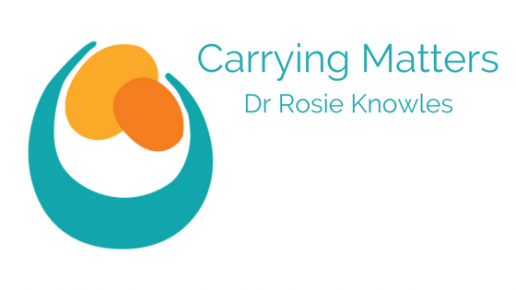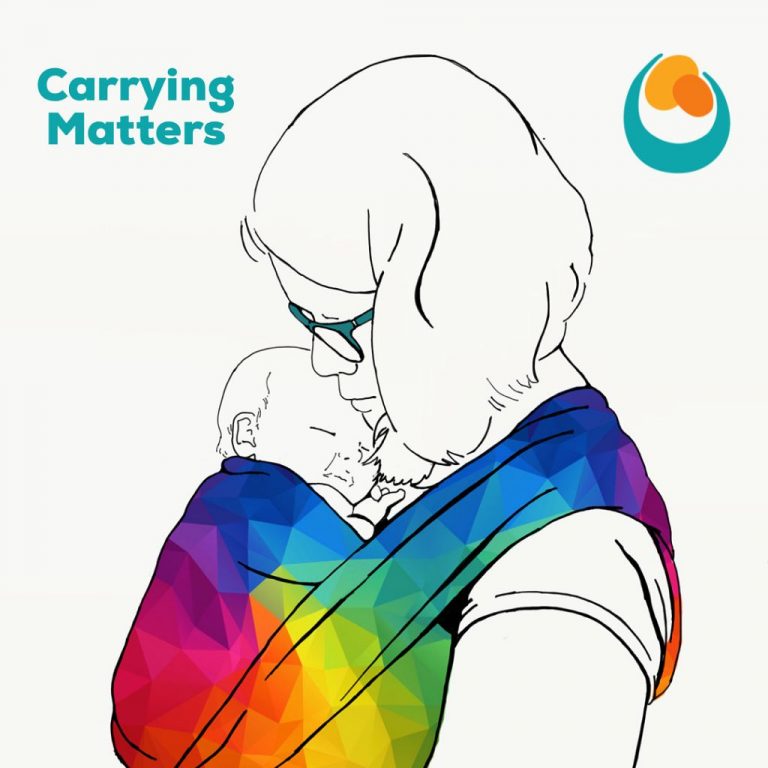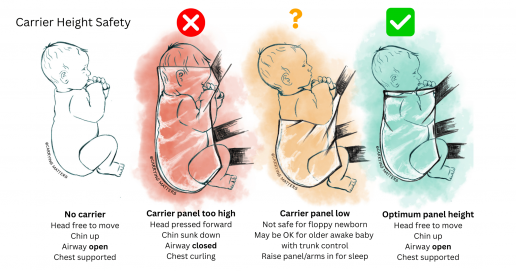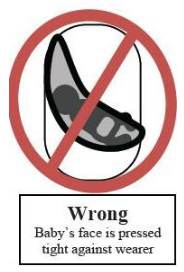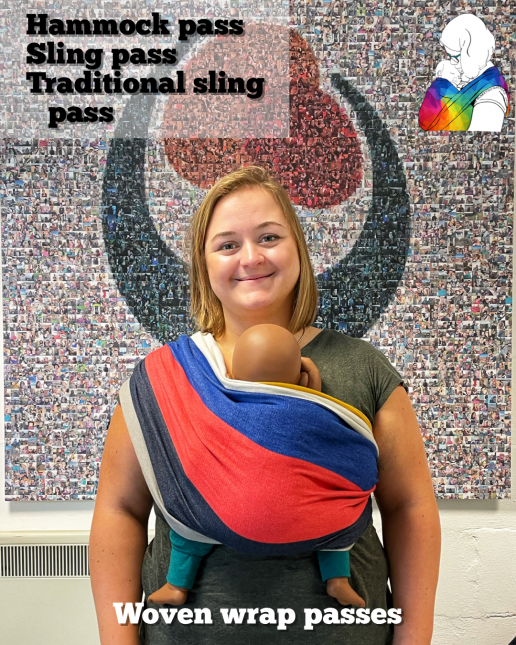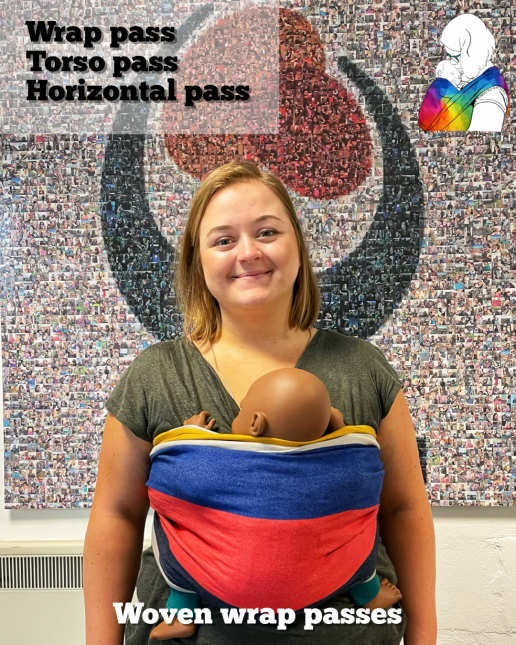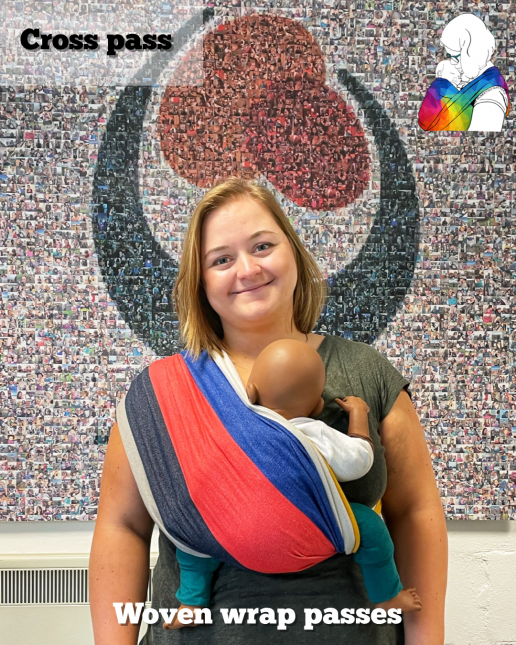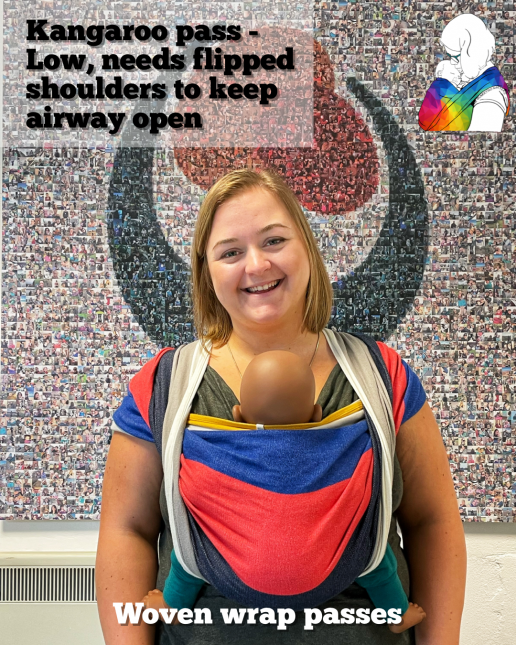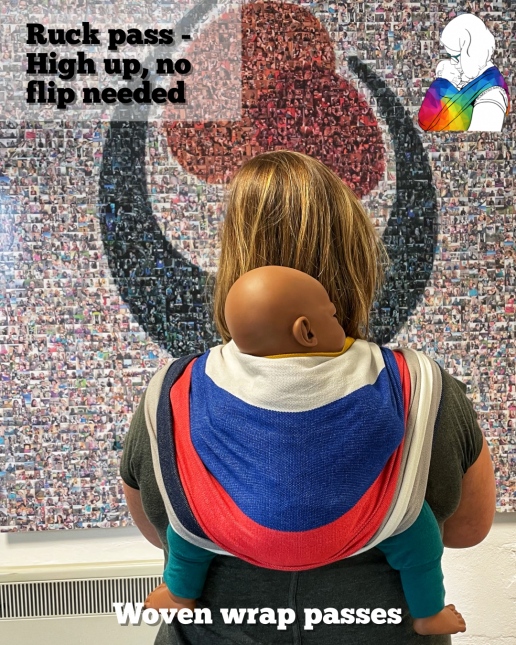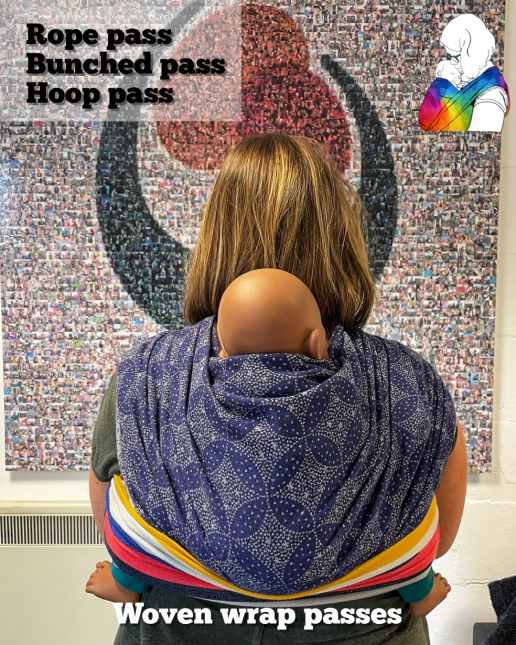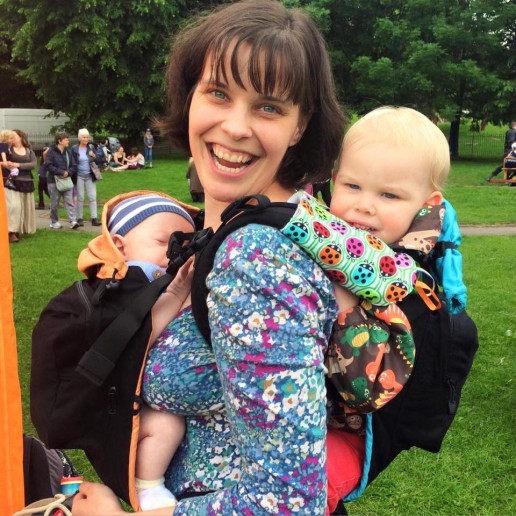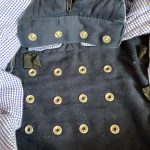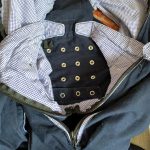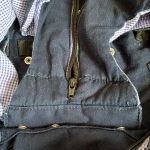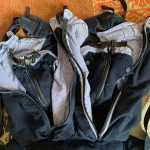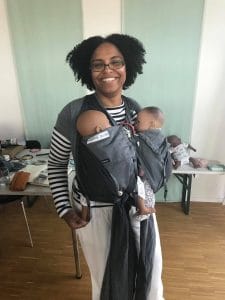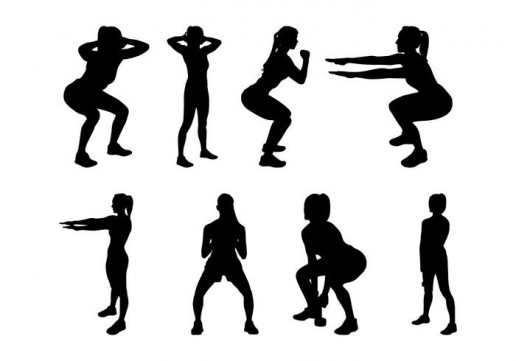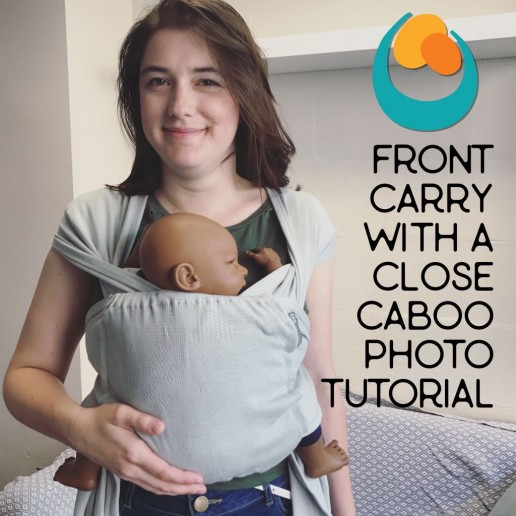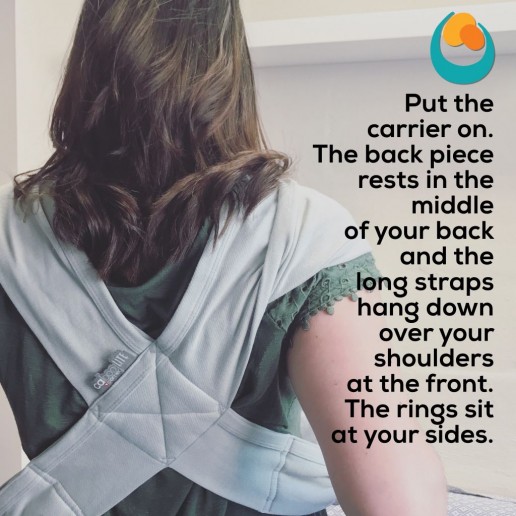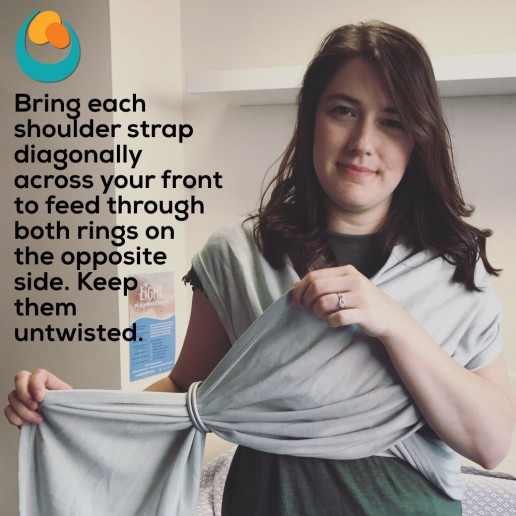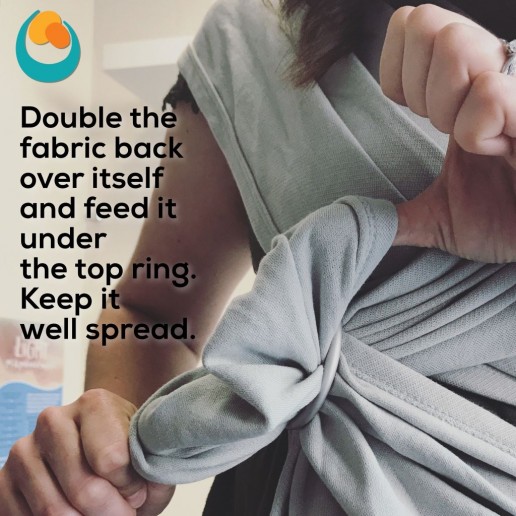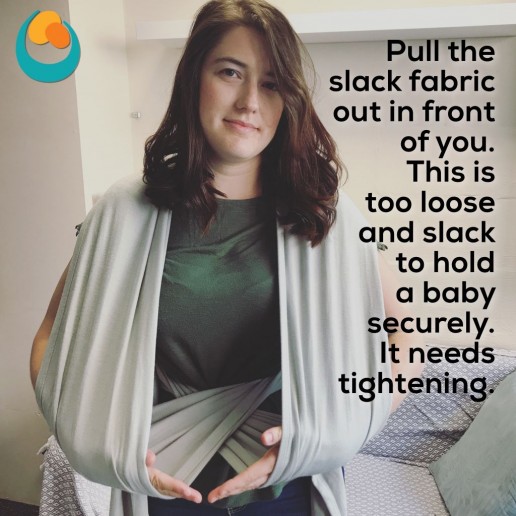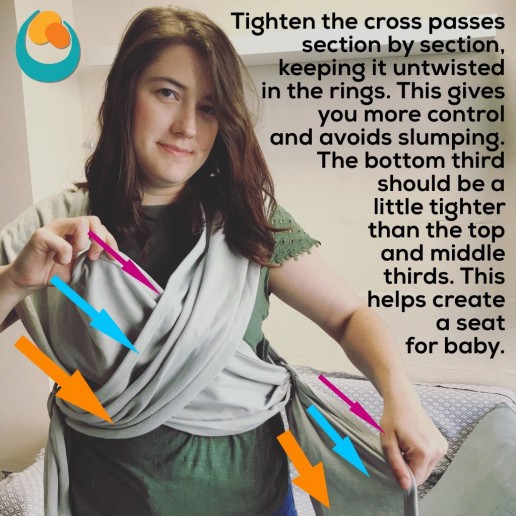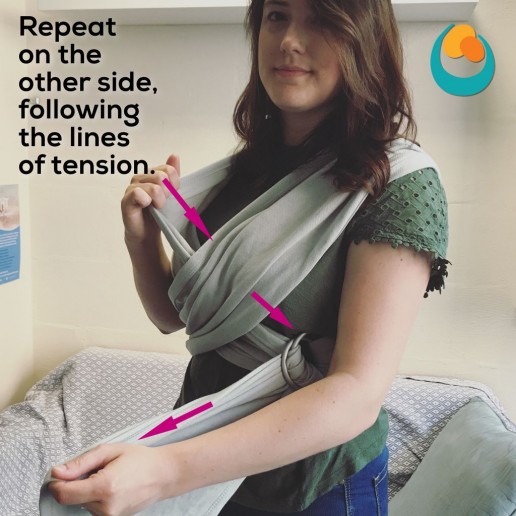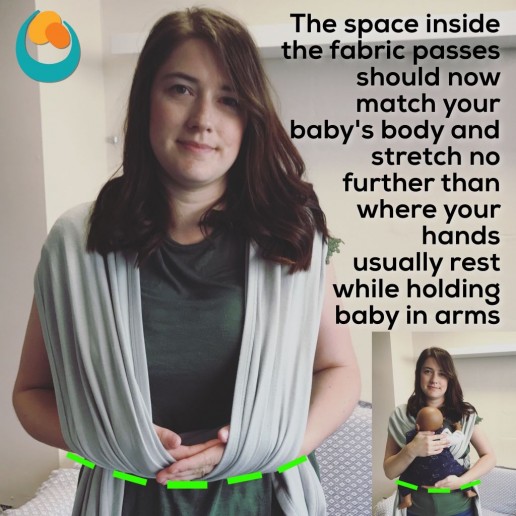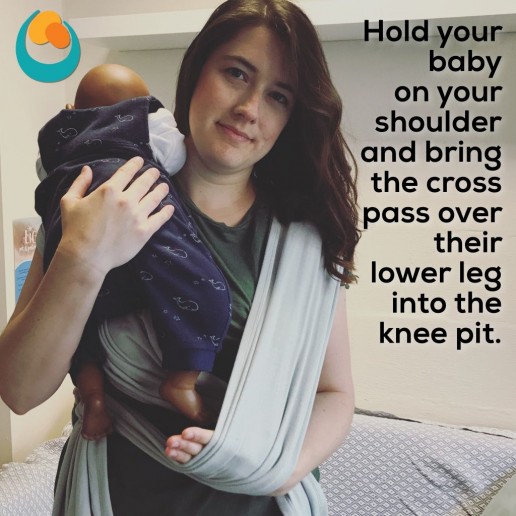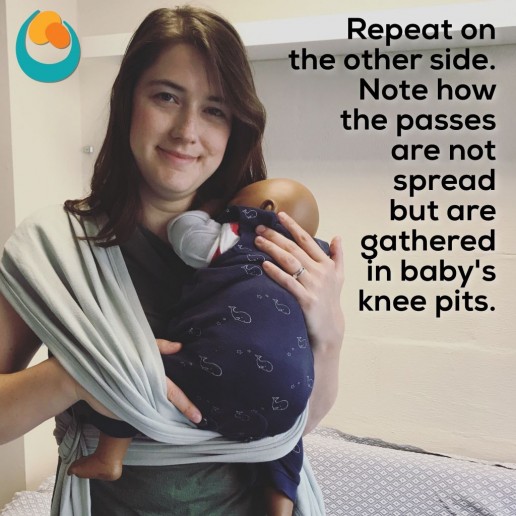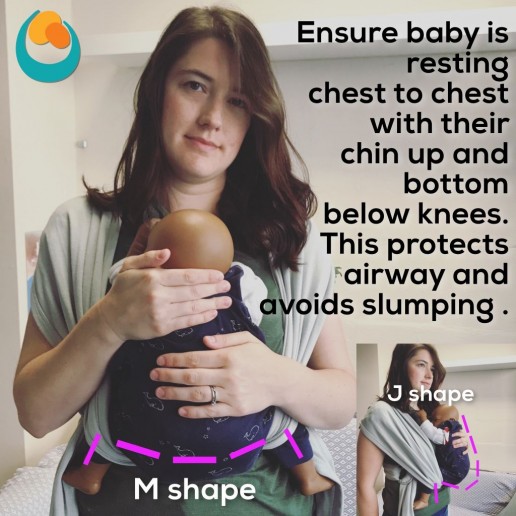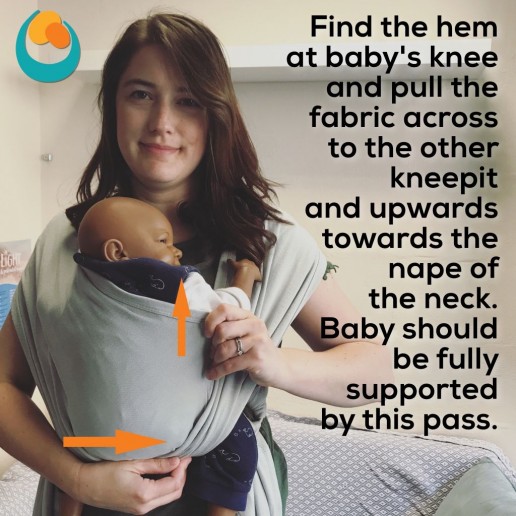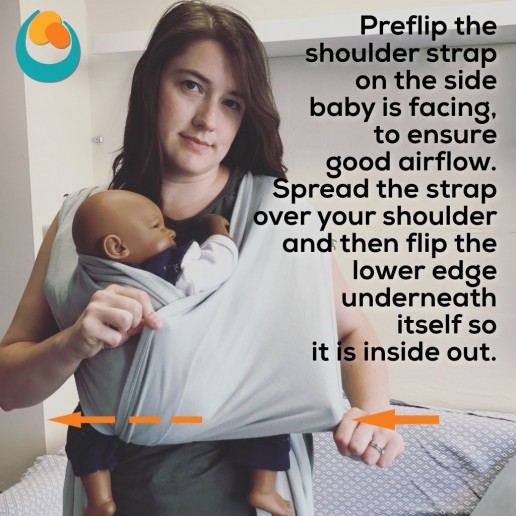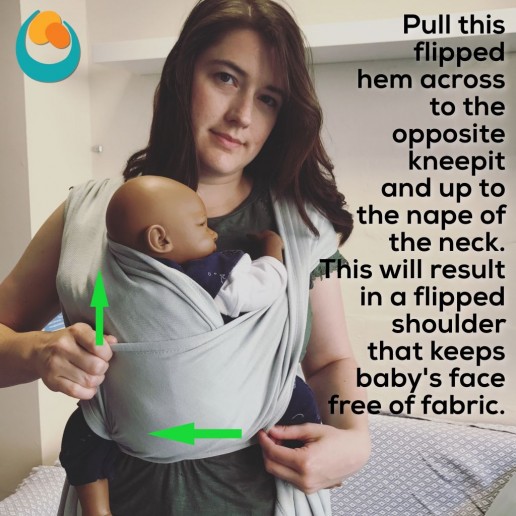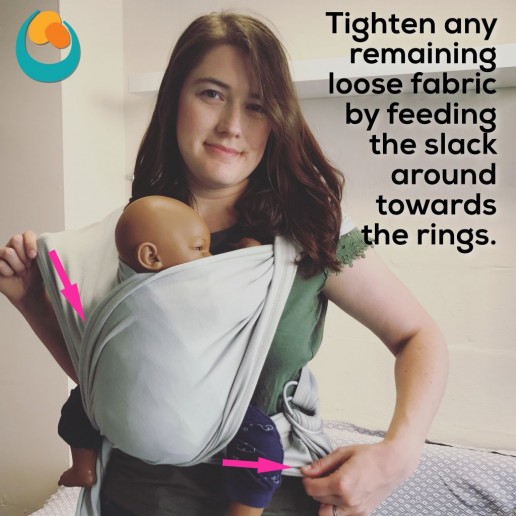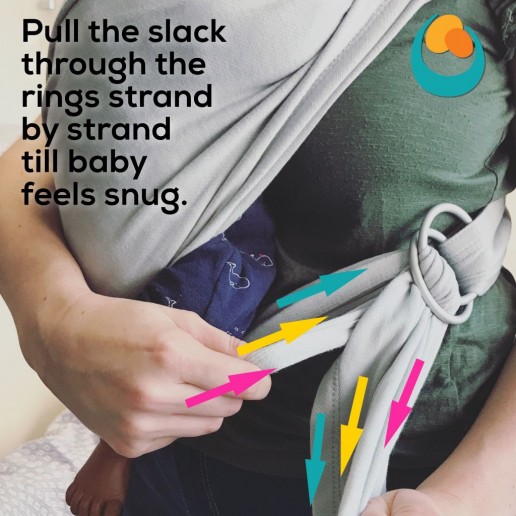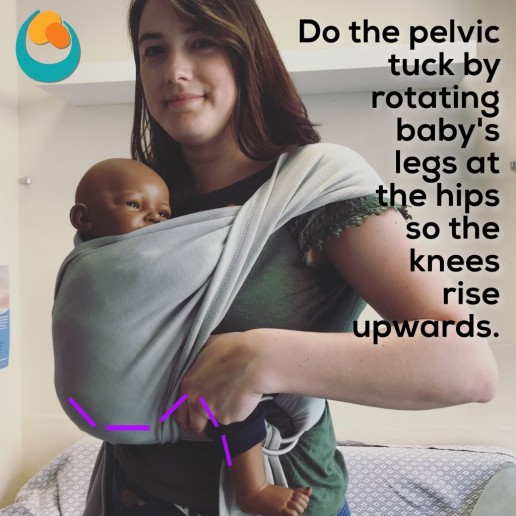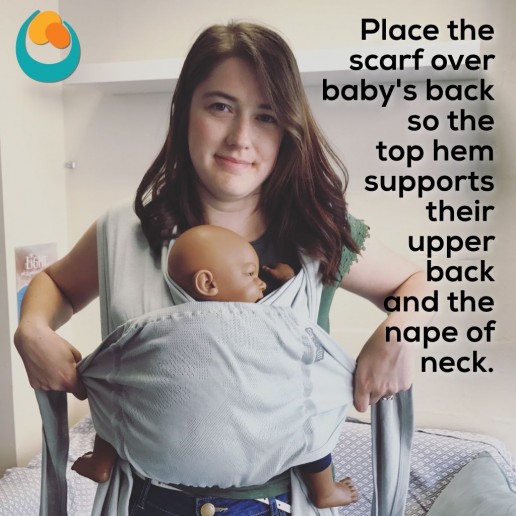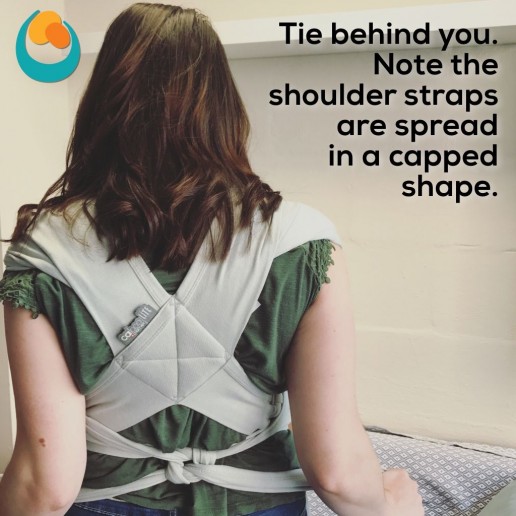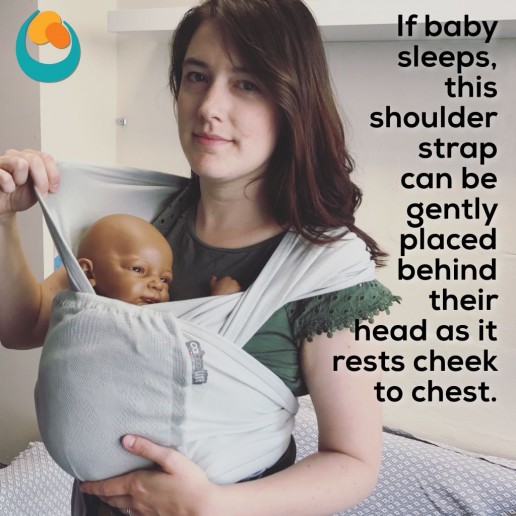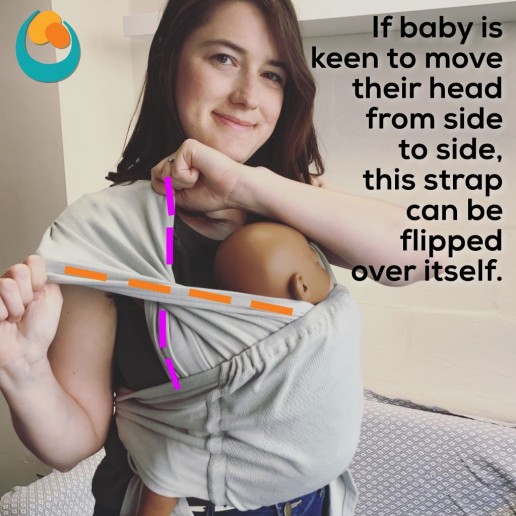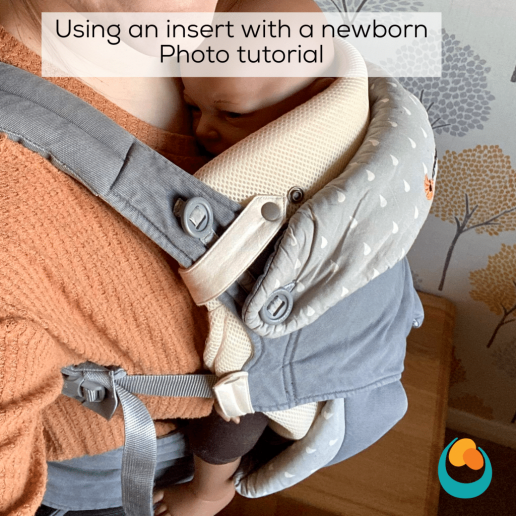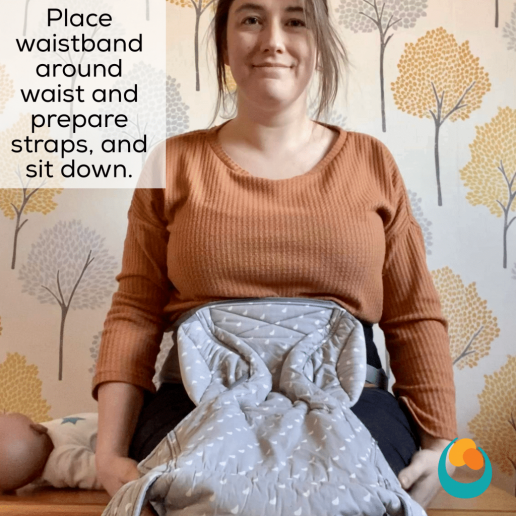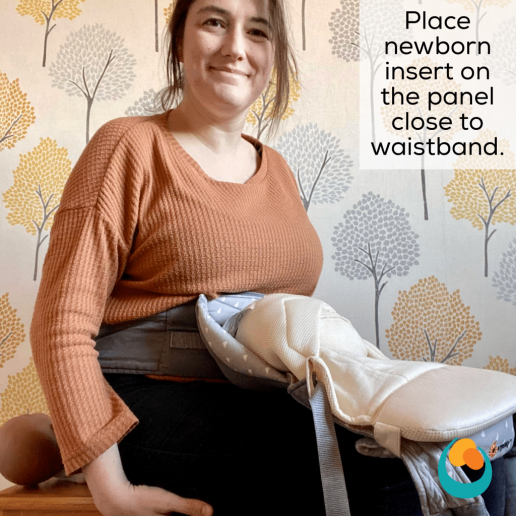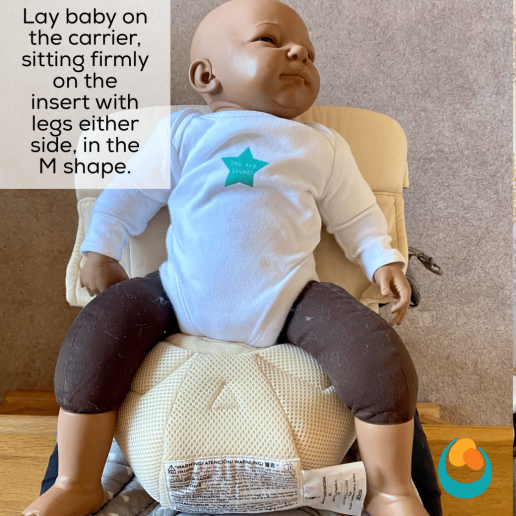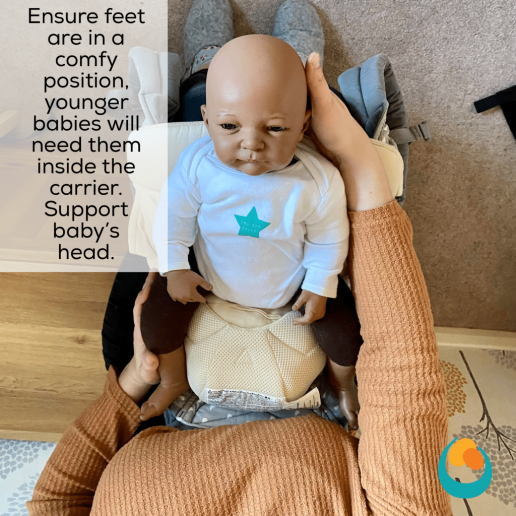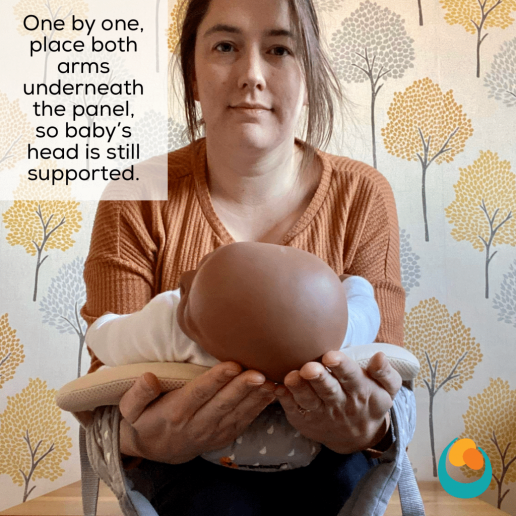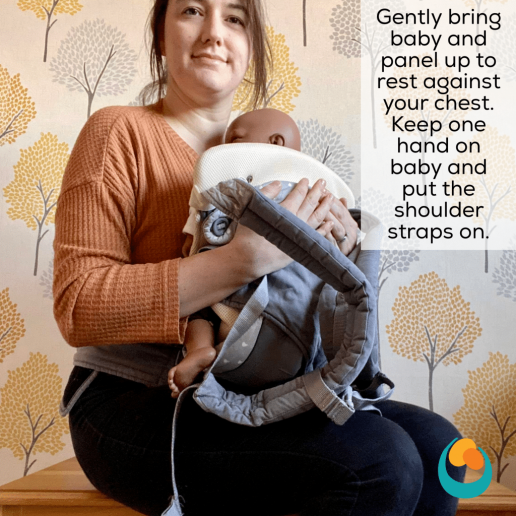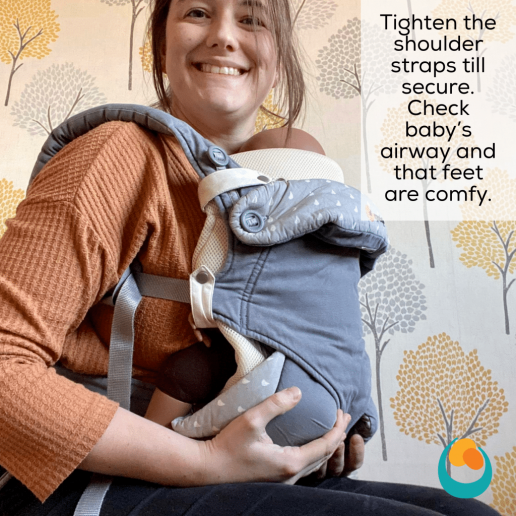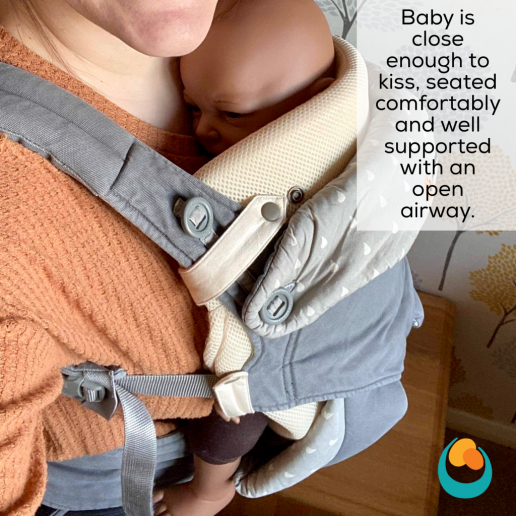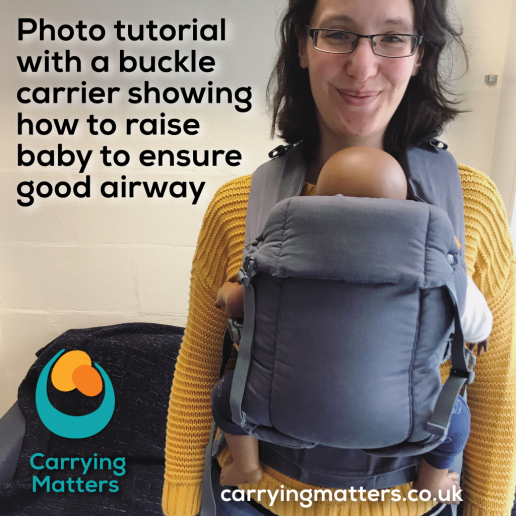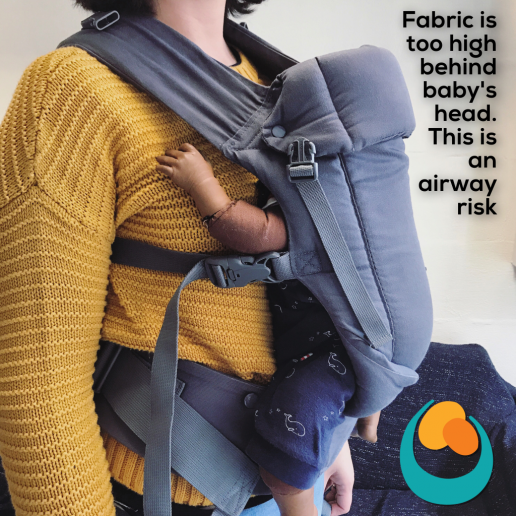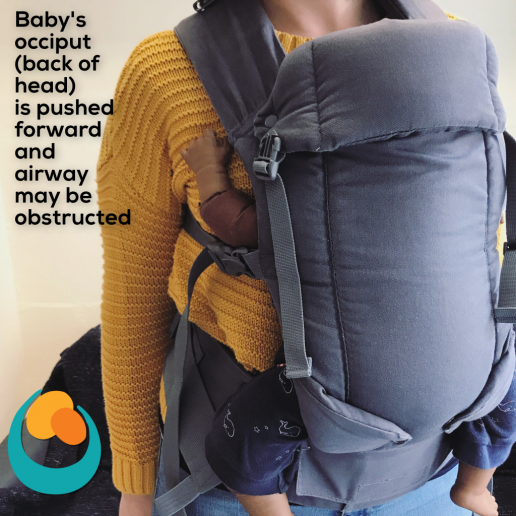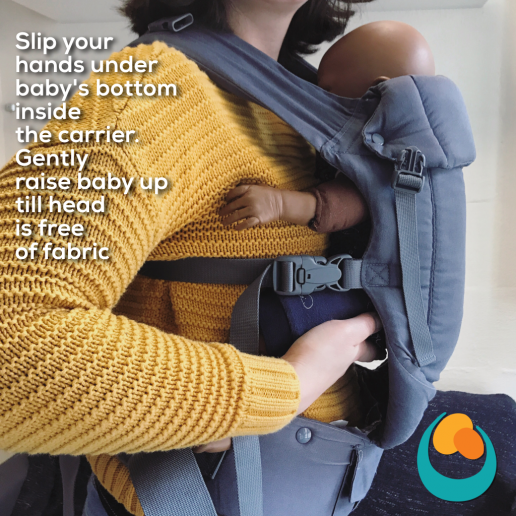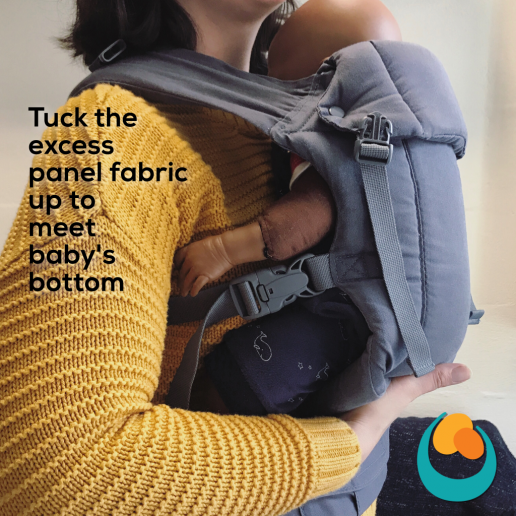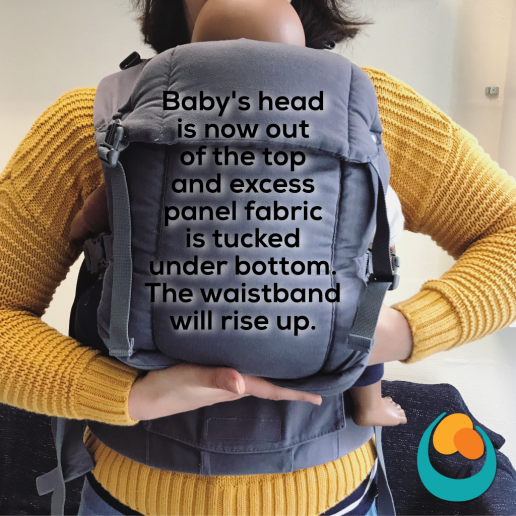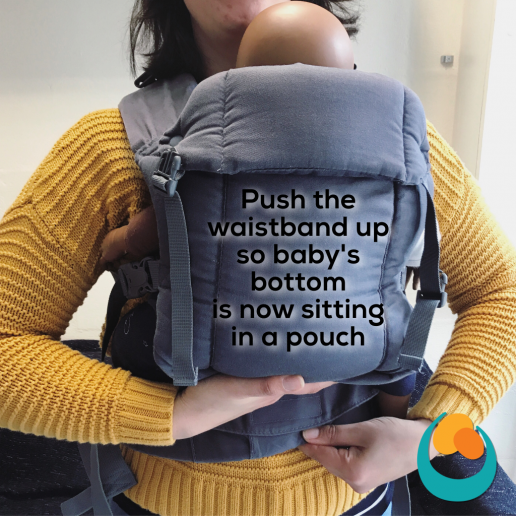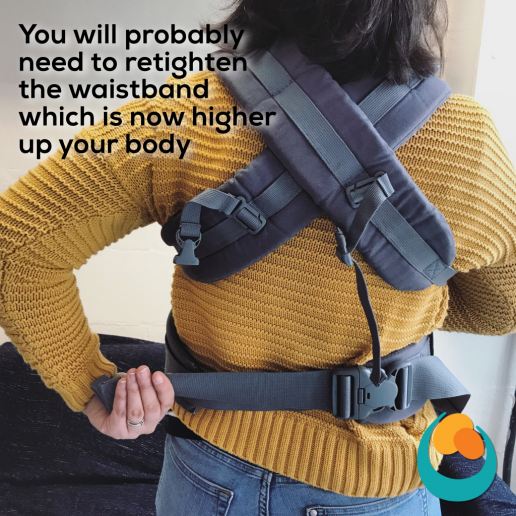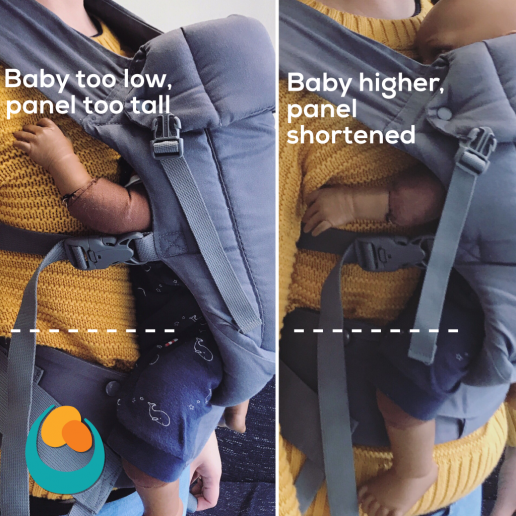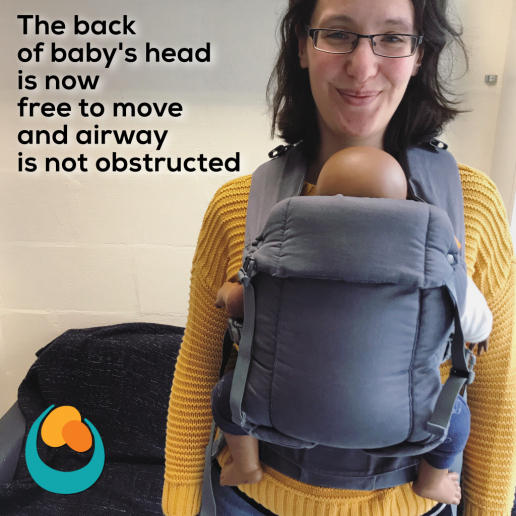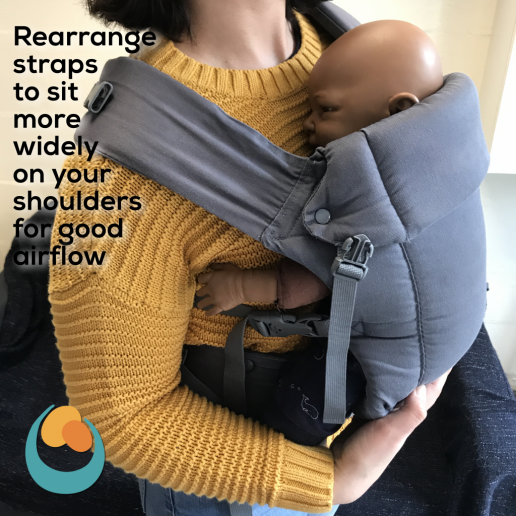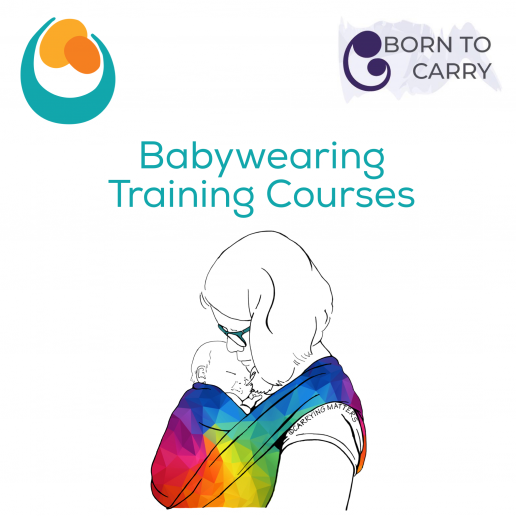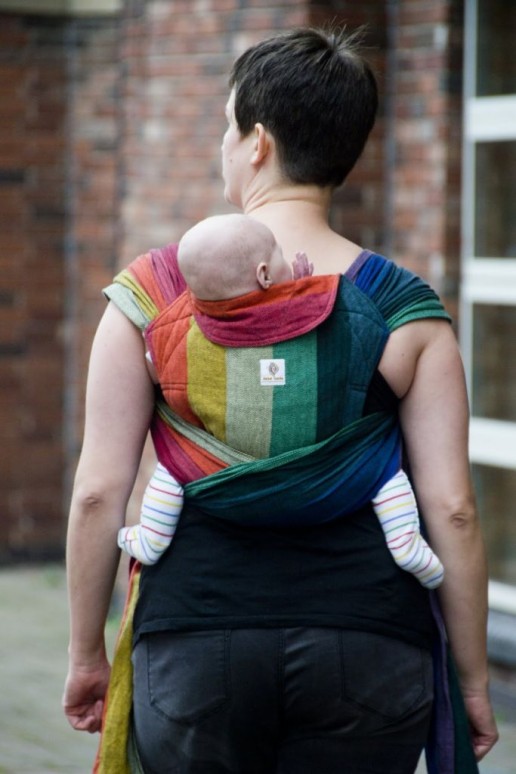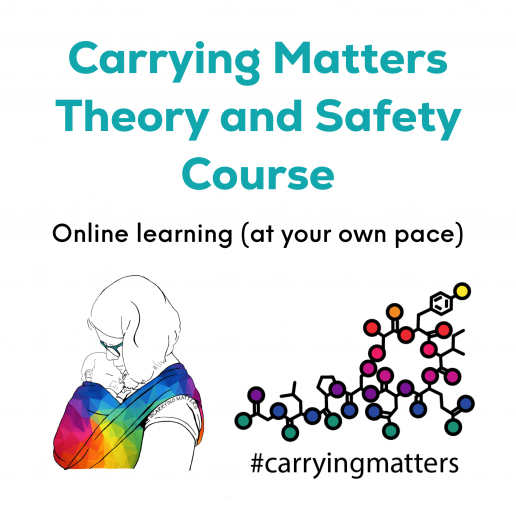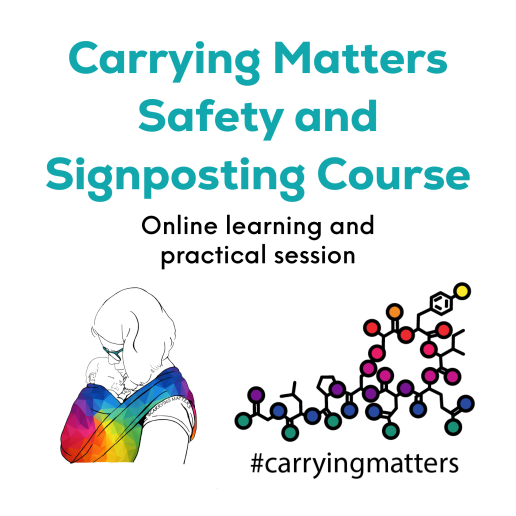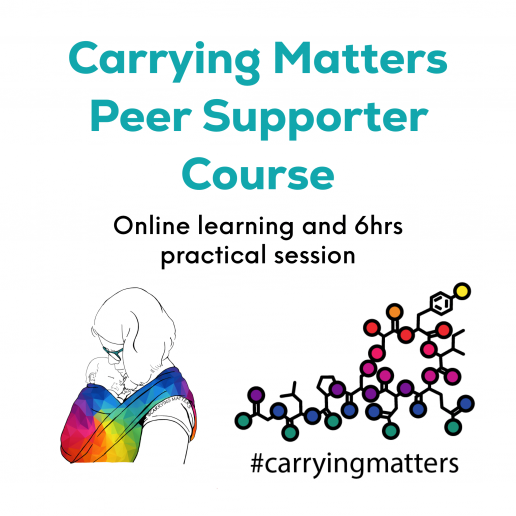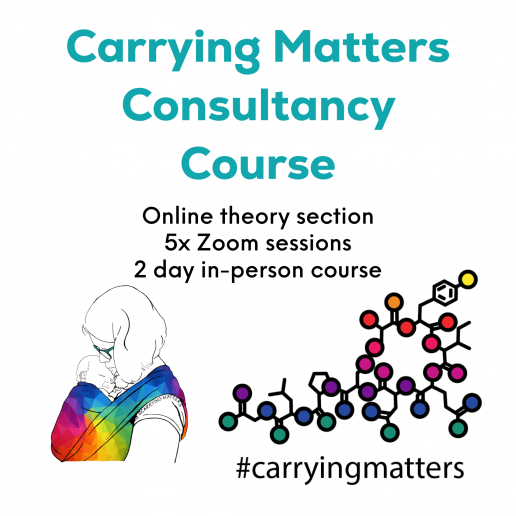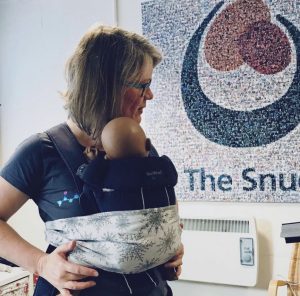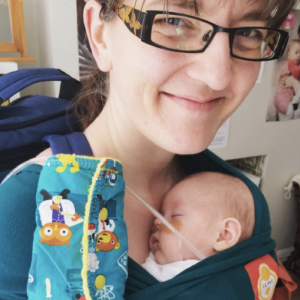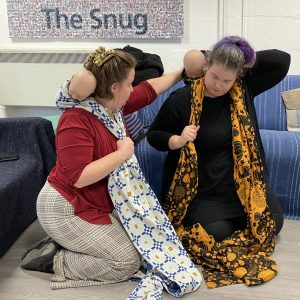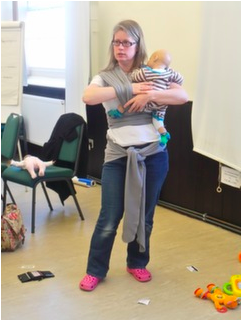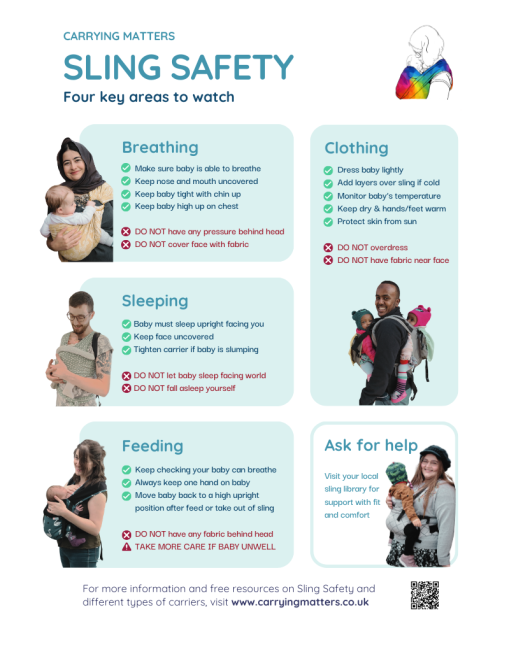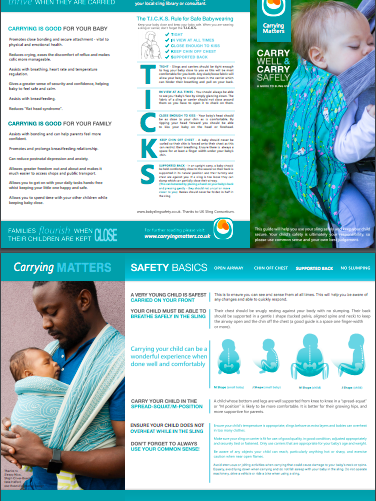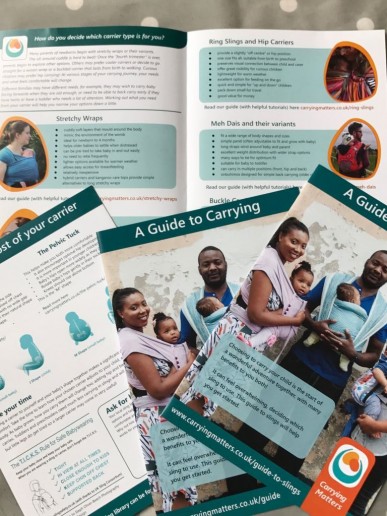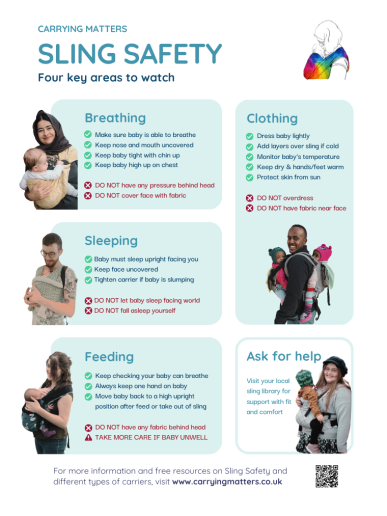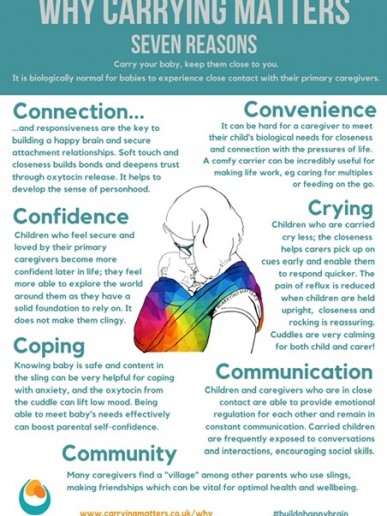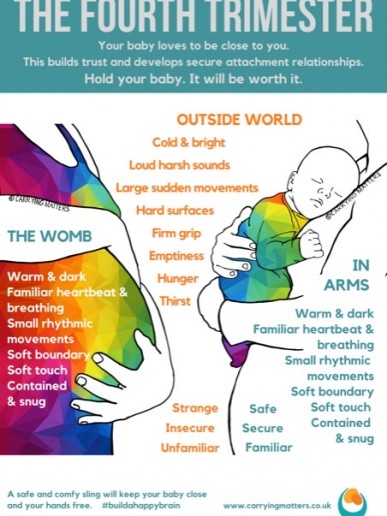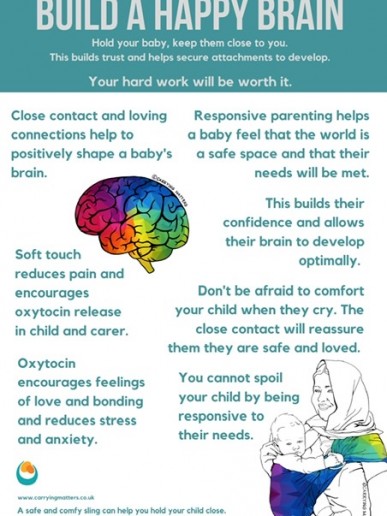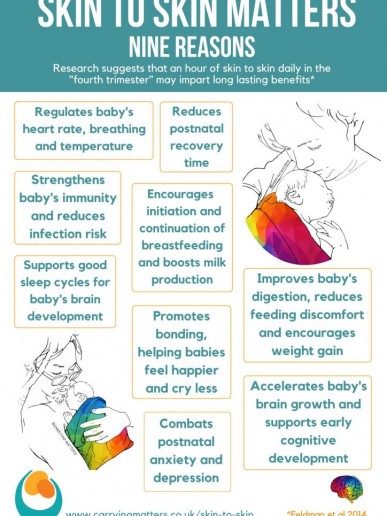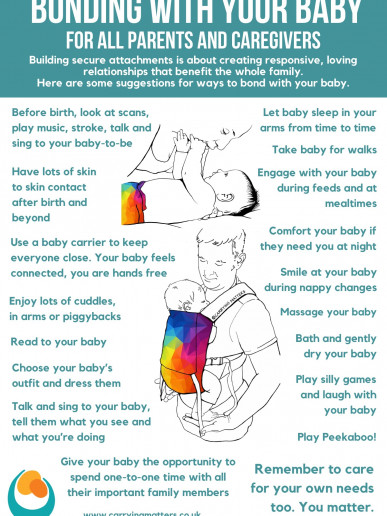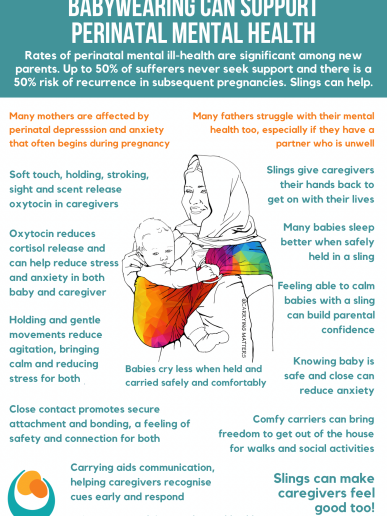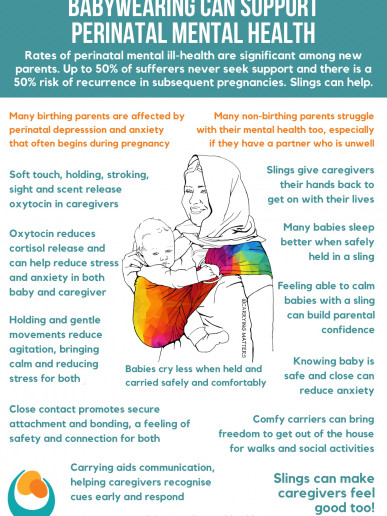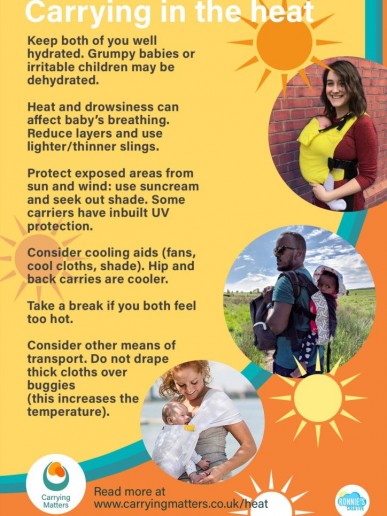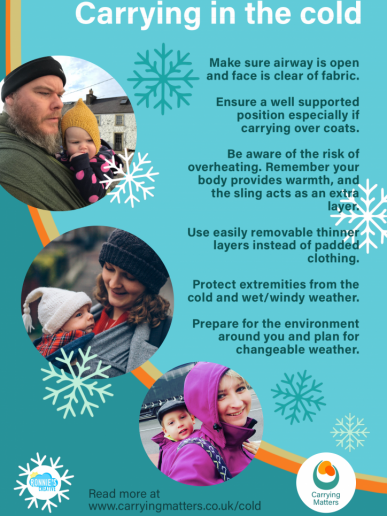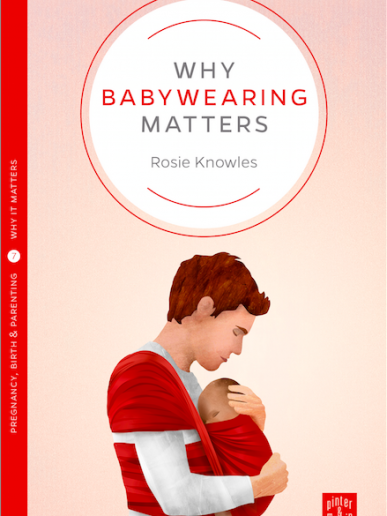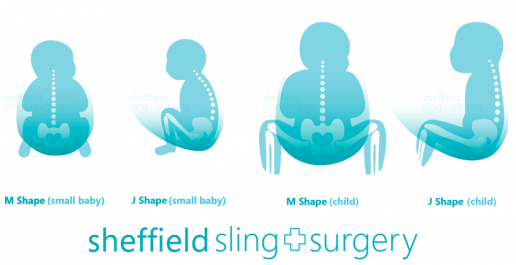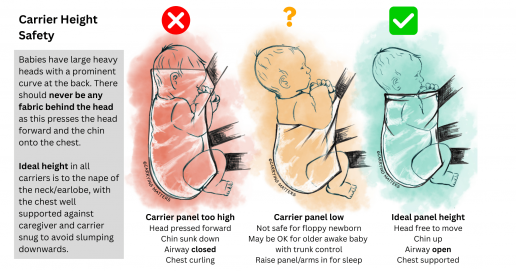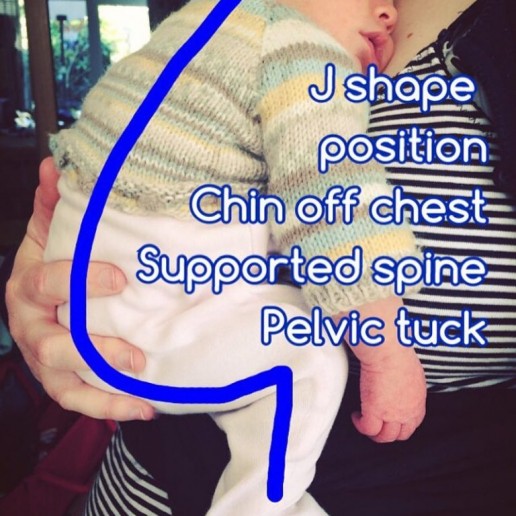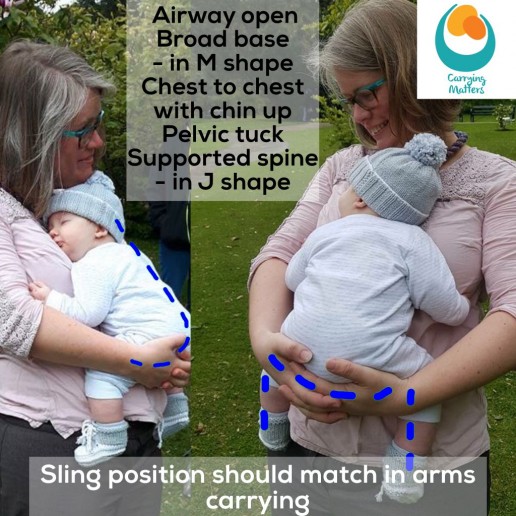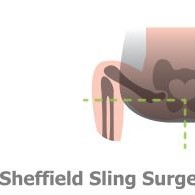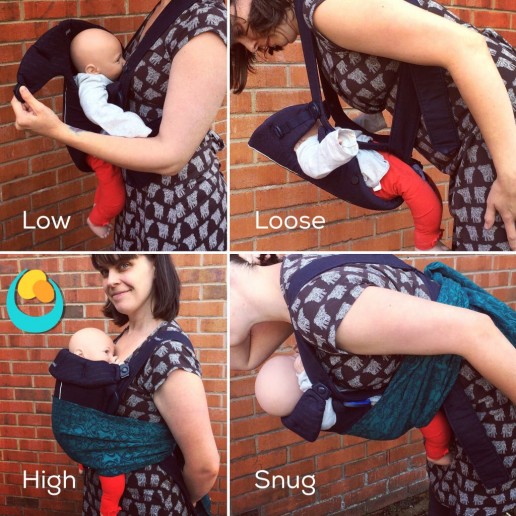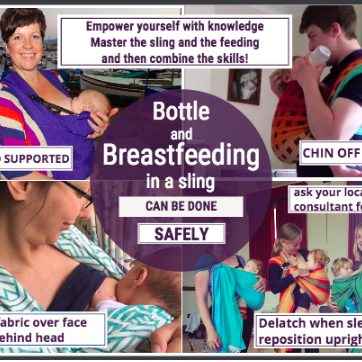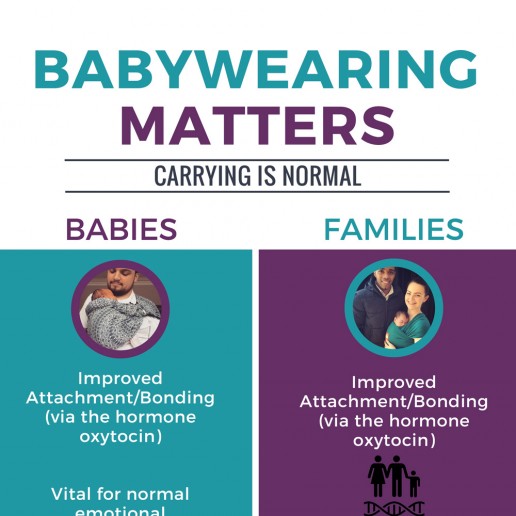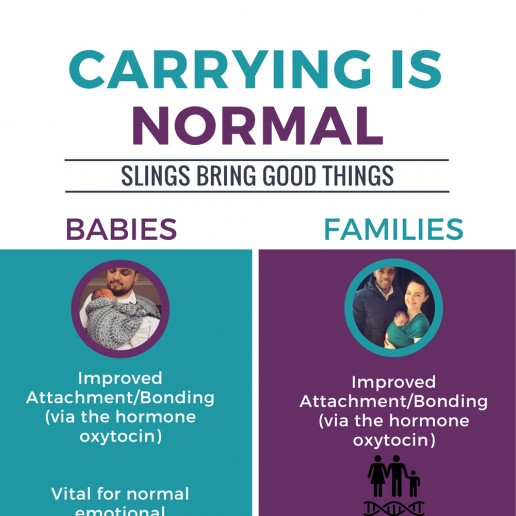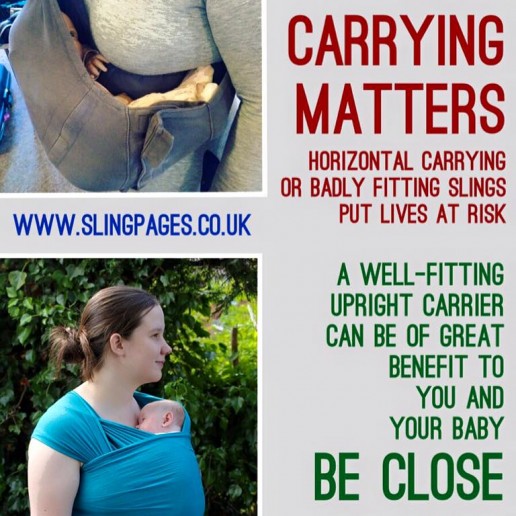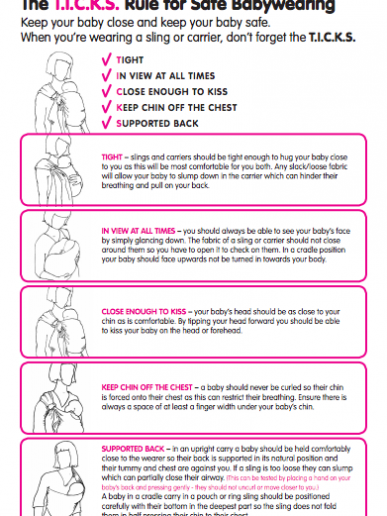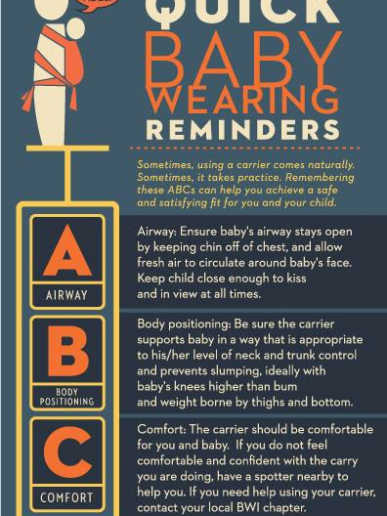Feeding in Slings
Why feed in a sling?
Carrying babies is a wonderful way to encourage successful and more long-lasting breastfeeding, as the frequent skin to skin contact and the building of loving relationships help to stimulate oxytocin release. Oxytocin release (which stimulates let-down) becomes conditioned to the mother’s experience and emotions; the touch, sight, smell or cry of her baby, as well as thoughts of her baby and the natural rhythm and expectation that baby will be hungry soon.
A sling that allows ease of access to the breast encourages responsive feeding, helping the harmonious nurturing relationship to flourish. Mothers can go about their daily tasks or care for older children while their child’s need for nurture and nourishment can continue uninterrupted. This is normal human behaviour.
For mums of small babies, it may be that the sling will be useful to carry their child to a place where they can be taken out to feed in peace and comfort. For others, being able to have baby partly supported with the sling and with one arm may allow a “third hand” to work on achieving latch, and can prove very useful for facilitating feeding. For others and once feeding is established, it can allow some simple multi-tasking rather than being pinned to the sofa.
Mothers of more than one child find being able to feed the baby on the go very useful. This is especially so if they are feeding responsively, as recommended by the WHO, and have an older child who needs their parent just as much. Parents of older babies who can feed quickly in a sitting upright position may also find a sling an invaluable and very convenient tool for getting on with daily life.
There is often great caution about the risks involved in feeding babies in slings, this is entirely appropriate. With knowledge and support, feeding can be done safely.
It may help to consider each element of feeding in slings as two separate skills to master – how to feed, and how to use the sling, and learn how to combine them safely, however, for some, the sling can actually be an aid to achieving latch. Practice will, of course, be needed, like with every new accomplishment!
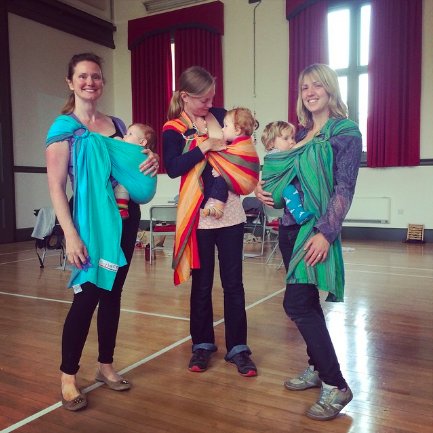
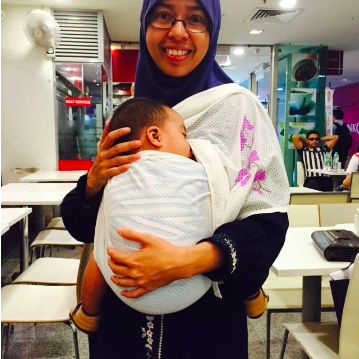
How can you keep your baby safe while feeding?
All the basic rules of sling safety apply when carrying a baby. The TICKS guidelines and the ABC reminders are below. However, there are different considerations needed with feeding in slings (as baby may not be close enough to kiss, for example). As always, protecting the airway and ensuring breathing is unobstructed is of paramount importance. There must never be fabric behind the head.
Babies, on the whole, are obligate nasal breathers. This means that they find it much easier to breathe through their noses than their mouths, for the first few months of life, and it is essential that noses are kept clear of any obstruction. This is why babies may struggle more than older children with mild respiratory infections affecting the small nasal passages. It is also why they are able to feed for prolonged periods of time without needing to delatch for mouth breathing, and why babies with snuffly noses find it harder to feed.
Therefore, while a baby’s mouth is engaged with the process of sucking and swallowing, the only patent airway is the nose. It is important for the carer to be consciously aware of any potential obstruction, either external (from sling fabric near the face or behind the head, or breast tissue, or clothing) or internal (neck bent over too far) and able to rectify it rapidly when required. High head rests can press baby’s head forward into breast tissue and prevent them from being able to pull back to take a breath if needed.
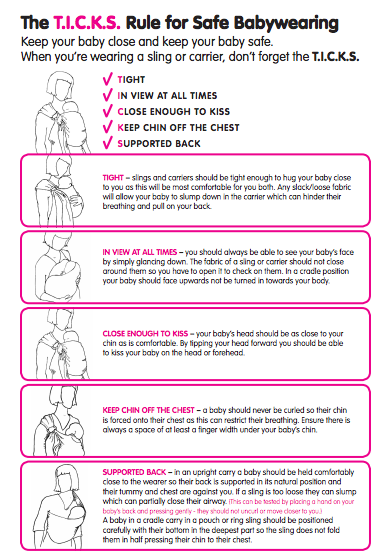
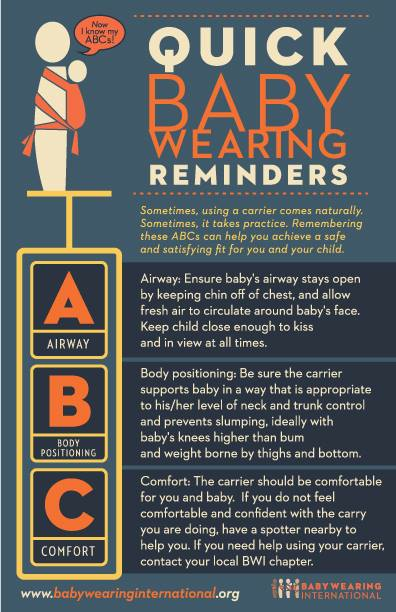
Whether feeding upright, or slightly reclined, the safest positions are…
- those that ensure a good air supply at all times with no fabric over the head and chin off the chest (check you can fit two fingers underneath if you are unsure)
- those in which baby’s head is aligned with their spine and only turned slightly to one side if needed
- those in which baby’s back and occiput (lower part of the back of the head) are appropriately supported (no fabric or head rests behind head)
- those in which baby’s knees are above the bottom and hips are flexed (bent upwards)
- those that ensure that a baby who has finished feeding or has fallen asleep is returned to the most optimal upright position to keep airway supported and open, or removed from the sling to sleep safely elsewhere
The image below shows the risk of babies slumping downwards inside carriers for feeding with their heads pressed forward. This is to be avoided (red image).
The choice of best position will vary from person to person, depending on the individual circumstances, however, the majority of successful “on-the-go” feeding is done in the upright position.
In my opinion, the greatest risk comes from breastfeeding in positions where baby is held face inwards towards the breast, with sling fabric pulled up over the back of the head, so the face is pressed firmly into breast tissue or the child is curled over into a ball.
Please note this dangerous position is not the same typical gentle reclining in-arms “cradle” positions where the head is well supported in the crook of the elbow and the chin is not on the chest. This is the most common breastfeeding position, with a sling adding a little support, almost like a cushion or a hammock, to take some of the weight off the supporting arm and give you one hand free.
What should a feeding carry look like?
Baby’s head should be completely free of fabric, being supported by the sling up to the nape of the neck, able to latch and delatch as needed. Their lower body should be well supported from knee to knee, either by wrap fabric well and snugly tucked up between your bodies, or a well tied/securely buckled waistband. Both of baby’s arms should be positioned around the feeding breast or bottle, just as if in arms, and the head should not be at an awkward angle. Feet should be free of fabric and baby should be comfortable and easily able to reach the nipple. If baby is able to achieve a good latch from this position, he/she should be able to feed if ready. Some practice may be needed for both of you!
Feeding in slings is more risky if you have a snuffly baby who is needing to delatch frequently for some mouth breathing, and finds herself unable to do so as her head is not free to pull backwards for a little extra air.
Babies should never be left to sleep in feeding positions as their disproportionally heavy heads can too easily droop or be folded over, with subsequent obstruction of their airways.
**Please remember that loosened slings with longer tails can present a trip hazard if you are feeding on the move.**
In general, it can help to think of the sling as a third hand to help support baby in position while you work on achieving a latch. Many people manage to feed happily and safely in slings, once they are armed with good information, and know what to watch out for. It usually works best with older children, too. If you feel unsure about feeding your child in your carrier, do get in touch with a professional who can give you some one-to-one help and advice.
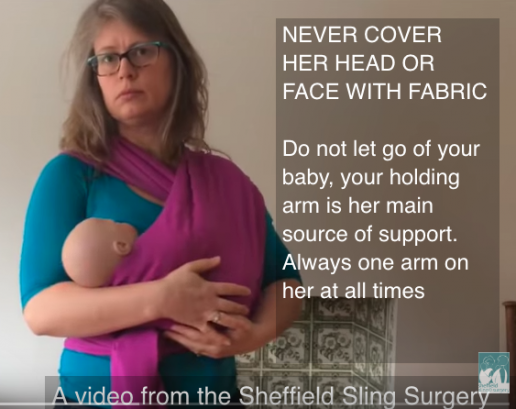
A hip carry may work well (with a wrap/ring sling/cross strap buckle carrier/meh dai).
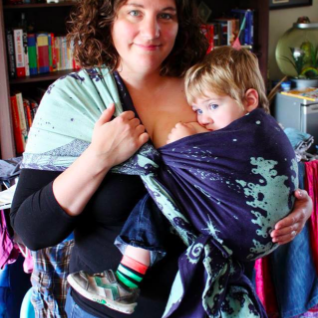
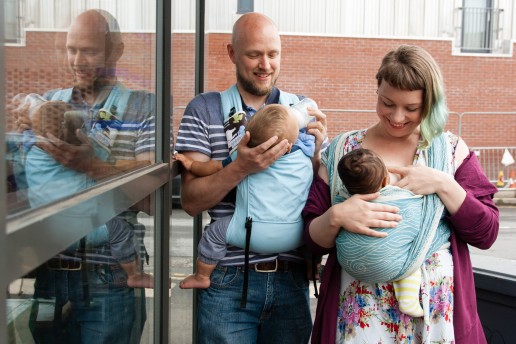
How can you make feeding in a sling as easy as possible?
For breastfeeding, think about ensuring easy access for your baby. Your choice of clothes can make things a lot easier. Loose fronted tops that can be easily moved out of the way, pulled down or lifted up, or those that open and close with zips or poppers, rather than buttons can help. Many mums swear by a combination of a loose shirt that can be lifted up/pulled down with a stretchy camisole or vest underneath that can be lifted up/pulled down. Such layering often provides good cover, if required. Bras that are easy to undo one handed (while your other hand supports baby”s head) are also helpful. Some mums find latching on more successful if they lean forwards slightly to bring the breast up to baby’s mouth, and many need to hold their breast up with one hand for the duration of the feed. Hoods can help with providing some discreet coverage, but remember that temperatures inside slings rise quickly if air cannot circulate freely, and carbon dioxide levels in rebreathed air are raised.
What kind of slings are good for breastfeeding in?
It is usually possible to feed a baby in most slings, with a bit of care. I don’t think there is really any such thing as hands-free feeding, as one hand or arm should always be on your baby to provide support, especially before they have excellent head control. But one hand free is better than none! Breast size, shape, flexibiliity and nipple position varies from woman to woman, and from stage to stage in the breastfeeding journey, so each dyad will need practice to work out which height works best for them. Larger breasts may prove more tricky for some.
Please remember that baby’s back and occiput should be well supported with no curling over, no fabric behind head. The chin should not be resting on baby’s own chest, and once finished feeding, baby will need to be returned to the previous snug, upright and close position, by adjusting the sling appropriately.
Feeding in ring slings
Ring Slings and upright feeding
From a good seated squat position, the pouch can be gently and slowly loosened by lifting the uppermost ring up carefully, so that baby is lowered slightly down your body. Ensure that the loosening is equal across the width of the sling so that baby’s upright seated squat position is maintained. Bring your child to the breast up so he is able to latch on without twisting his neck.
Bottle feeders may not need to lower their baby as much, but some loosening will help to ensure baby does not have to twist his head to the side too much for teat access.
.

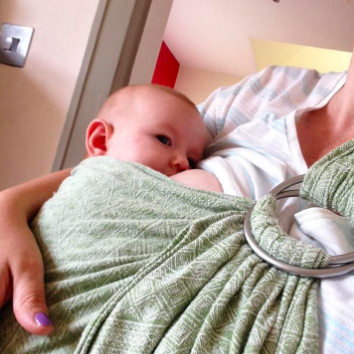
Ring Slings and slightly reclined feeding
From the snug seated squat position, loosen the fabric slowly and carefully to lower baby just a little. Lean forwards slightly and support baby’s upper body with one hand. Gently recline your baby into the waiting crook of your arm as you bring his far leg around to your front so both legs are together. Ensure the pouch of fabric is well tucked up between your baby’s side and your tummy so he is resting as if in a hammock, slightly turned towards you, bent knees above bottom, feet outside the carrier, with his head and neck resting on your arm. Adjust his location in this position so his mouth is able to reach your nipple – it should look and feel just as if you were holding him in your arms to feed. Keep the top rail of fabric under baby’s neck, do not pull it over his head.
Bottle feeding is similar, but baby’s head will be facing the ceiling.
Feeding in Woven Wraps
Woven wraps and upright feeding
Carries such as the Front Wrap Cross Carry and its variants can be easily adjusted for feeding. The knot at the back (or side) can be loosened just a little, with the resulting small amount of slack worked equally and evenly back along the fabric so baby is sitting in a lower pouch with mouth above nipple, but still snug and supported, and in the spread squat position. The whole carry can be moved slightly across to one side or the other, and the baby can then be brought to to the breast. It is easy to switch sides.
Hip carries (especially those with slip knots) are easy to feed from one side.
Bottle feeding is similar, but baby may not need to be lowered quite as much, and may need a little more space at the top edge for the bottle to be accessible without baby’s head having to turn too far.
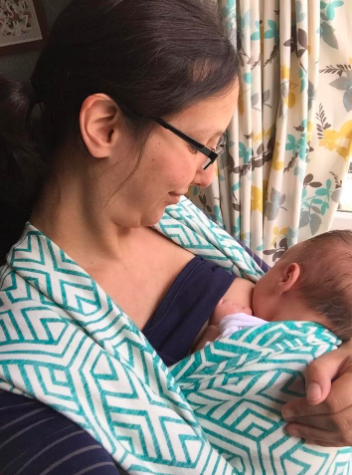
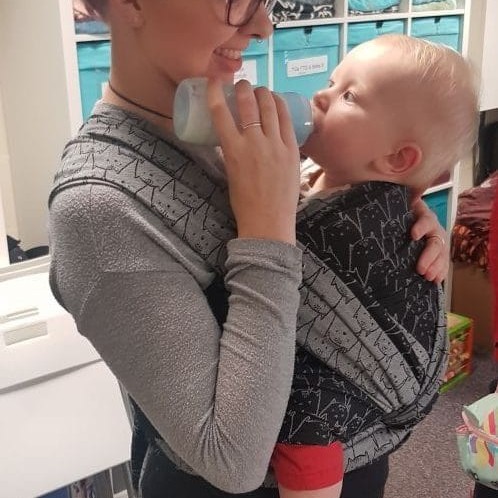
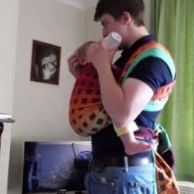
Woven Wraps and slightly reclined feeding
This works best with carries that do not have cross passes under baby’s legs, so baby can be gently tilted to one side to rest on your feeding arm. The FWCC can be partially untied so the long tails are hanging down over the shoulders and baby is sitting just in the horizontal pass. He can then be carefully gathered to one side with his far leg brought round to the front, his body turned to face the parent, bent knees above bottom, feet out and head and neck resting on your arm. Adjust his location in this position so his mouth is able to reach your nipple – it should look and feel just as if you were holding him in your arms to feed. Keep the top rail of fabric under baby’s neck, do not pull it over his head. The long tails are usually best left loose as retying them will mean you are not in control of baby’s head during the process.
Bottle feeding is similar, but baby’s head will be facing the ceiling.
Feeding in Stretchy Wraps
There are many different ways to feed in a stretchy wrap. Some methods are safer than others. On the whole, stretchy wraps are mostly used with small babies in the classic upright “hug hold” also known as the “pocket wrap cross carry”. It is these young babies from birth to four months who have the greatest risk of airway obstruction, so it is worth visiting your local babywearing consultant to get some advice and support if you can. I can’t stress enough how important it is to ensure your baby’s back and head is well supported, but still able to move freely for delatching, and that baby’s face is visible, not covered with fabric and their nose is clear. Once the feed is over, baby must be returned to the previous snug, close, upright seated squat position.
The video to the left shows how to use a stretchy as a breastfeeding aid.
Je Porte Mon Bebe and Slingababy have some excellent videos for this too.
Feeding in soft structured carriers
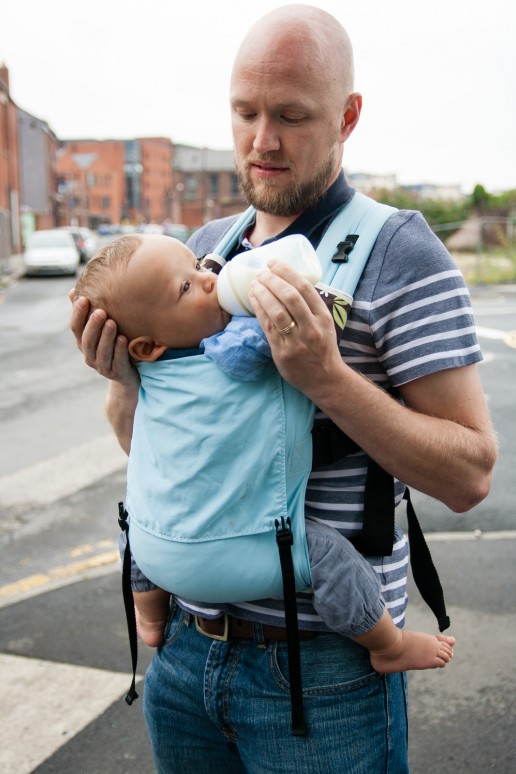
Soft structured carriers (mei tais, half buckles, full buckles) and upright feeding
This can work well for bigger babies who have some head control. Baby should be in the carrier at the height she would normally be carried, with back and legs comfy in the seated squat position. To feed, slightly loosen the waistband gently and lower it a couple of inches and retighten, then loosen the side buckles or ties one by one to lower baby to the required position. One side may need to be loosened more than the other as baby feeds from that side. The breast can then be brought to the mouth. It is usually easy to switch sides with the straps being adjusted each time to allow baby to move. Baby’s back and occiput should be well supported with no curling over and his chin should not be resting on his own chest.
Bottle feeding is similar, but baby may not need to be lowered quite as much, and may need a little more space at the top edge for the bottle to be accessible without baby’s head having to turn too far.
Once finished feeding, baby will need to be returned to the previous snug, upright and close position, by adjusting the sling appropriately.
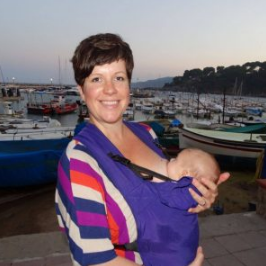
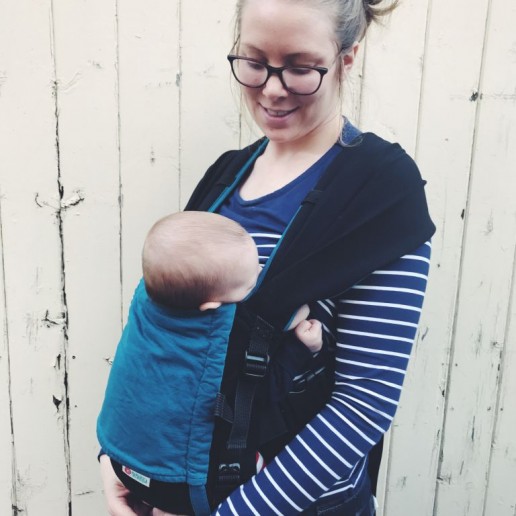
So in summary.. “Can I feed my child in my sling?” The answer is a resounding YES YOU CAN, from newborn to toddler, in lots of positions, from breast and from bottle. The key to doing it well is to ask questions about how to do it safely and empower yourself with knowledge to make a choice about how you wish to feed and then practice. It’s all about the AIRWAY! Do ask your local sling professional for some support…. – and enjoy!
Some further reading;
Seven Reasons Why Carrying is Great for Breastfeeding Mothers (Jess Hippey for Oscha Slings)
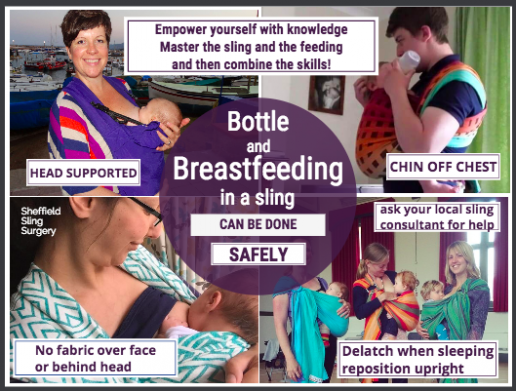
Tandem Babywearing, or Carrying Multiples
So you've got more than one baby! Twins, triplets or more? Wondering about tandem babywearing (carrying multiple children at once)?“Is carrying them in a sling possible?” “Is it safe?”
“What sling do I need or want?”
“Where do I start with babywearing twins, or with carrying a toddler and a baby?”
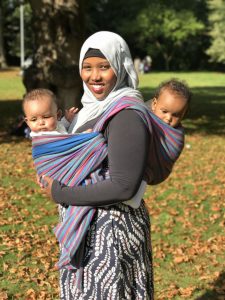
There is no doubt that carrying more than one child is one of the things that can baffle and inspire people at the same time, from the practicalities of it to the beauty of two babies in one sling.
Why carry more than one child?
When people think of carrying multiple children they often think of carrying both babies at once, this is called “tandem carrying” or “tandeming”, however, it is not necessary to tandem carry every time, or even at all! Being able to carry one at a time will free up your arms, meaning you are able to look after both babies at the same time, keeping one soothed while meeting the other’s needs.
This goes along with all the other many benefits to babywearing that applies to one child and their caregivers. More in depth information about all of these can be found in these articles here and here.
Babywearing can also be an amazing tool to use if you also have older children, to help engage in play with them whilst the younger babies are happily in the sling. There can be some limitations with this as it can be difficult to keep older children in check when tandem carrying, due to some of the movement /speed restrictions!
How does it work?
For new parents the idea of learning to use a sling can be daunting and especially for new parents of multiples due to the huge range in choice and the practical logistics of it. The best thing to do is to learn to carry one baby safely and with confidence first, then move on to tandem carrying when needed.
But how do I learn to use a sling?
There are so many ways to learn now from one-to-one support (if you are local to us in Sheffield, the Sheffield Sling Surgery bookings are here) to self-learning from online videos (do choose channels made by experienced and reputable teachers!)
One of the main benefits of choosing professional support and learning one-to-one is the hands-on and emotional support this service offers. This can range from learning your very first ins and outs of carrying your children, getting a fit check and some tweaks, to expanding your carrying knowledge as you begin to learn your preferences, all with a listening ear and an experienced guiding hand.
The most important thing is to ensure that you are carrying safely. Feeling safe and confident with professional support can be one of the most helpful inputs for beginning to develop that amazing bond with your child/ren.
Booking a consultation will help you to gain these skills. Consultants train with various schools of babywearing and they have a wealth of knowledge and experience in carrying children as well as teaching you the practical skills, they may call themselves babywearing or carrying consultants. They have a passion for carrying children and the technical knowledge to know how to carry in a variety of ways, and will support you in however you want to carry.
Laura; “I carried my first baby everywhere and anywhere so I knew I wanted the same when the twins came along but the idea filled me with all the anxiety! I booked onto a couple of consults and turned up at the drop in sessions at the library to nosey at and try out the styles.
When I first carried both babies I used the stretchy wrap which I was taught to use at a consult. We went through the basics first and got one baby secure then onto adjustments for twins. Each step was explained and I was helped to iron out the niggles to get them and me comfy. The consultation was invaluable! It made getting out and about so easy. Now they’re bigger I’m using all the slings and wraps thanks to more consults and guidance. I love babywearing!”
So what are the options when carrying multiple children?
There are a vast number of ways to be able to carry multiple children. Some carriers are designed to carry two children at the same time, others can be adapted to suit the needs of your family.
We will first look at the individual carriers that can be used in different ways to carry single or multiple children, then we will look at carriers that have been made specifically to carry twins. We’ll explore using two similar carriers to carry multiple children, and then lastly we will consider the mix and match approach of using different types of slings at the same time!
Individual carriers that can be used to carry one or both children
Stretchy Wrap

A stretchy wrap is a length of fabric, usually made of soft and stretchy machine knitted cotton, that is usually between 4 and 5m long and about half a metre wide. Some have bamboo blended in with the cotton, which adds to the softness and comfort, and some have a small proportion of spandex, which adds to their elasticity and stretch.
When choosing a stretchy wrap it is best to get your hands on a few different brands as they vary in stretchiness and therefore give a different level of support and comfort when two babies are being carried, due to the increased weight.
The best thing to do when preparing to carry twin is to get to grips with using the sling for one baby, usually the pocket wrap cross carry. Our photo tutorial for putting on a two way stretchy wrap in a pocket wrap cross carry (PWCC) with a single baby can be found here. Once you have mastered this, then you can learn to get both in at the same time (you will need to allow more space for both babies!)
However, when it comes to putting both babies into a stretchy wrap, it can be challenging to learn all of it from a video (many videos are best used as aide memoires once the skill has been learned). Furthermore, some twins may be under the recommended weight limits for the wrap, so it would be beneficial to get in contact with your local babywearing team and book some in person support with them to make sure that everyone is safe.
This is a beautiful video done by LeKeta Kemp from Tandem Trouble, it shows her demonstrating a pocket wrap cross carry for twins with a sturdy stretchy wrap.
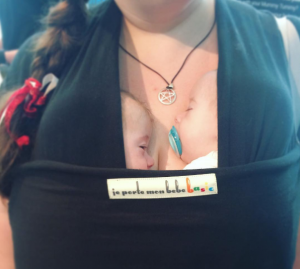
Pros and cons of using a stretchy wrap for twins
Pros
- Once tied, a stretchy is a poppable carrier so can be put on at the start of the day and babies can be taken in and out of the wrap without needing to retie each time.
- It can be used for one or both babies.
- It can feel more affordable than other options.
Cons
- It can be hard to get the hang of it when you are first starting out, as there is when learning any new skill. However with practice it will soon become manageable.
- It can be harder for people with smaller frames and as babies get bigger.
- Some people can start to run out of space on their front with two babies!
Close Caboo
The Close Caboo is a hybrid stretchy carrier, the fabric is sewn into a pre-arranged shape (similar to a PWCC), which can be slipped on over arms and head, to offer two ready made hammocks for baby to rest in.
A Close Caboo can also be used with twins in the same way as a stretchy wrap. It has some of the structure sewn in, so is already partially set up for use. It has two pockets, both adjustable by tightening the fabric through the rings at the side, and then a third layer to tie over the top for security.
The advantage of the Caboo is that it can be adjusted to size, then popped on. With a few minor adjustments it can be used for either one or both babies, each pocket can be adapted to fit their different sizes. It is also really easy to adjust when the babies are in the Caboo, as the rings can be used to pull the fabric tighter if needed.
You can find our photo tutorial for getting one baby into a Close Caboo here. With two, each baby sits in separate pockets and they are placed in one by one, with the third layer tied on around both at the end.
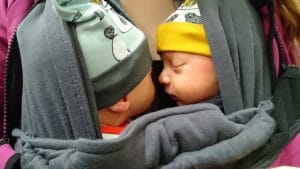
Pros and cons of using a Close Caboo for twins
Pros
- The fabric is a one-way stretch – this can mean less of a slumping risk as babies get bigger and can feel sturdier.
- It is really easy to adjust when the babies are in.
- It offers a quick and easy front carry.
- It is easy to use and learn for one baby as well as two.
Cons
- The panels are thinner when compared to a stretchy wrap, this means it can be harder to get the position just right to avoid red marks at the knee.
- It is a little more expensive than a stretchy wrap.
Woven Wraps
A woven wrap is a fantastic tool for babywearing, it can be used in so many ways for one or two children of the same or different ages as well as being used alongside a different carrier. Essentially a woven wrap is one long piece of fabric that has been woven specifically to carry children, they vary in length, known as their size (most commonly from 1 to 8), and what length is used comes down to personal preference and what you are going to use the wrap for. You can find more information about woven wraps here.
A woven wrap can be used from the very start of your carrying journey with twins, either having both on the front (a front tandem carry) or one on the back and one on the front. If you are planning to do this then a consultation is needed to learn these skills. Back wrapping a small baby is a skill that takes a lot of practice in itself and requires professional support and guidance, and it is best to get to grips with front carries with the woven wrap first.
Front tandem carries
There are many options with woven wraps for front carrying two babies of a similar size until you run out of room! One of these options is the Jasmine’s Hip Carry which is usually done with sling rings.
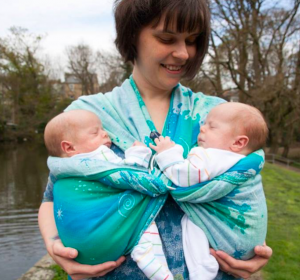
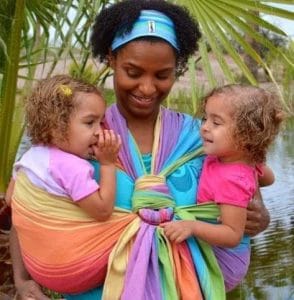
What makes it so special? The Jasmine’s Hip Carry is done using one woven wrap with either one or two rings. Once prepared the wrap can be left threaded through the rings so it is pre-tied and removed for wear at a later time, each side of the carry can also adjusted to suit the size of each baby. This can be tricky to master but lots of practice will help!
This video by LaKeta from Tandem Trouble is a great video to see the logistics of a Jasmine’s Hip Carry with two rings.
Other options are the Amanda’s Tandem Hip Carry,(from Tandem Trouble), which is a ringless carry that knots round the back. There is also a twin version of the popular Front Wrap Cross Carry (from Little but Once), this has no ring and is tied at the front or back depending on what size wrap is used.

Front and Back Tandem Carries
A front and back tandem carry can be used for children of the same or of different ages.

This is because woven wraps are a collection of individual strands meaning they can be carefully tightened section by section to ensure your baby is fully supported from neck to knee pit, with the airway open, respecting the natural gentle curved J and M shaped position. As these back carries tend to be done high up on the parent’s back, caregivers are able to see their baby’s face and feel their breathing on the back of their neck.
When back carrying a newborn, most people will choose a simple rucksack carry, which is just a single layer across the baby, ensuring there is less pressure for tiny bodies. However, getting your baby up on your back can be a challenge and is something that is best learned with the help of a professional. This video from Wrap you in Love will give you an idea of the safe way to do this if you would like to see how it works.
Once you have one child up on your back, you can use the rest of the long wrap, tied in a crossed across the chest ‘Tibetan’ finish, to pop your little one into the cross passes. This can also be done with two different wraps, mostly done when a toddler is on the back in a carry with multiple passes and a short wrap is used as a simple sling pass, passed through the wrap and tied under their bum, as seen below.

Doing a front and back tandem carry can be a lifeline for some parents. Life with small children can often feel very hectic and being able to keep both children close at the same time can be a fantastic parenting tool.
Anna Nham; “Solo parenting with a toddler and a baby and the older one refuses to walk home, or tiredness hits and everyone wants a cuddle at the same time. These are the moments I am grateful to be able to tandem carry my kids. There’s 19 months between my two and while I can’t say a tandem is an everyday occurrence, when both of them need some close time or both need to nap at the same time I am always grateful to be able to pop them both up and at least create a moment of peace for me. It was especially important when the baby was smaller and needed more contact. Allowing me to give the older one something familiar and make him feel like he wasn’t pushed out. Now he finds it hilarious when his brother is put on the front and he is on the back and loves to share that space with him. I definitely can’t get far with 24kg of kid attached to me but I can provide comfort and that’s an invaluable tool to have.”
Pros and cons for woven wraps
Pros
- They are very versatile for carrying one or two children.
- They can be used for front carrying both children, or for carrying one on the back and one on the front.
- They can be used with children of different ages.
- They can be used from birth to the end of your carrying days.
Cons
- They can be difficult to learn, but once you have gained the knowledge of how the fabric like to move then it is an invaluable tool .
- They can be hard to get the right fit every time due to the way they are tightened and deal with a feisty child, but with patience and practice you will get it.
Carriers designed specifically to carry twins
These carriers have been made with the needs of twin parents in mind and are focused on easy carrying of both children at the same time. They can be expensive, due to the complexity of the engineering (even if they are simple to use!)
TwinGo
This is a fantastic buckle carrier and one of the best known twin carriers around. It gives caregivers the option to carry two children at once, either twins or children that are close in age as it is designed to have one child on the back and one on the front.
It can also be split into two individual carriers meaning that you don’t always have to tandem carry. Here is a demonstration video showing how to use the TwinGo with two children.
One limitation of the TwinGo is that the panels aren’t adjustable in height or width. This means that it is best used when both children are big enough to fit in the panel knee pit to knee pit (normally around 5-6 months). There are newborn inserts, but inserts can be fiddly when used and cannot be used for a back carry. We recommend trying the TwinGo out before you buy, as the whole bundle can end up being expensive.
Pros and cons of the TwinGo
Pros
-
- It is ideal for carrying two children of the same/similar age with one on the front and back.
- It is designed specifically to do this, so it works very well.
- The padded straps and waistband add comfort even with heavy children.
-
- It can be used as two separate carriers for different caregivers if needed.
Cons
- It can be fiddly using inserts until babies are big enough.
- It cannot be used for front tandem carries, only front and back.
- It can only be used as a front and back tandem carry for babies four months and over, when they have reached the 3 milestones defined by TwinGo. More details about these can be found here.
- It is expensive.
The Weego
This buckled carrier is designed to carry two babies of the same age on the front only. It has two pouches that are adjustable with poppers on the inside to give the correct panel height (size) which means it can be used from newborn till around 6 months (or 15kg combined weight.)
Below you can see images of the popper system in the Weego, followed by images of the configuration of the pouches.
Here you can see the inside of The Weego with all the possible placements for the poppers (A&B). You can also see the zips used to close each individual pouch (C), as well as the zips to secure the final layer of the sling around each baby (D).
An amazing article going into full detail about the Weego can be found here. It was written in 2019 by Joe Rawlinson, a dad of twin girls. It is a detailed and honest review about the Weego and how it helped them as a family with newborn twins.

Pros and Cons of the Weego
Pros
-
-
- Each compartment can be sized for each individual child.
- Both children can be carried on the front at the same time.
- Can be left already prepped so no need to re-do the internal poppers until babies have grown considerably.
- One baby be left in while the other is removed. This can be very useful for nappy changes/feeds etc.
-
Cons
-
-
- It can be fiddly to get right.
- It can feel bulky when on the front with both babies in it.
- It can feel heavy due to the narrow, flatter shoulder straps with no waistband.
- It is expensive.
-

The MiniMonkey Twin Carrier
This carrier is designed to carry two children of the same age, on the front only. It is made up of two pouches for carrying babies in an upright position, mimicking a Jasmine’s Hip Carry in a woven wrap, but with the added support of a waistband. The ability to move the position of the pouches along the waistband can be very helpful to get an optimised and more comfortable position for both the wearer and the children.
The MiniMonkey Twin tends to fit babies best when they are about 4-5 months old, as the pouch height can be more challenging to adjust for smaller, newborn babies. This can be done with support from a consultant. Many people find that the Mesh MiniMonkey is easier to use with smaller babies as the material is thinner and easier to tuck for adjustments. Still others find that using two individual MiniMonkey carriers together on either shoulder across the body can be a more comfortable (and cheaper!) way to carry two babies together.
Here is the instruction video.
Pros and Cons of the MiniMonkey Twin
Pros
-
-
- It is a carrier that is prepared in advance, making it simple to put on each time.
- Each pouch can be adjusted for each individual child.
- The spreadable shoulder straps offer more comfort.
-
Cons
-
- It can be more challenging to use for newborns.
- The height of each pouch cannot be adjusted so if babies are too small then they may get ‘lost’ in the pouch. This can be overcome with support, or using the mesh version.
- It is expensive.
Using Two Matching Carriers
There are many ways of using two individual carriers to carry multiple children, either the same or different types of carrier. A lot of these combinations are learned through trial and error to find out what suits your family best.
Two Meh Dais and Half Buckles – A Meh Dai (also known as a bei dai, formerly known as mei tai) is the common name given to a type of Asian carrier that originated in China many years ago. It consists of a fabric panel with long straps that are wound around the parent’s body, to be tied or twisted or tucked away securely. Different cultures have their own variants of these cloth carriers. A half buckle is the same style with the panel and woven wrap straps, however instead of being tied at the waist there is a buckle fastening.
Front Tandem Carries
There are two main ways of using Meh Dais to tandem front carry. This first is that both are used in a standard front carry but both children are held off centre (this can be seen demonstrated below) by Drew Joseph or by doing two hip carries. These can be tricky to master, but practice helps!
With two half buckles the same methods can be applied, however there are also a few brands (such as Didymos Didyclick and Mamaruga Padma) that can have two panels attached to the same waist band. The advantage of this is that there is only one waistband being used, reducing bulk, but you still have control of placement of the panels.
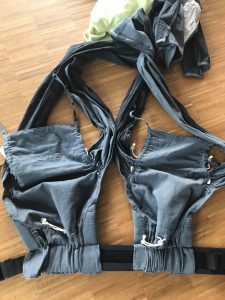
Images from Rosie Knowles (of LaKeta Kemp using two DidyClicks)
Front and Back Tandem Carries
Meh Dais and Half Buckles can also be used to carry two children, one on the front and one on the back. It is possible to tandem carry this way from a few weeks old. However, it can be scary and challenging to get a small baby safely on your back alone, just as with a woven wrap, so it is best to get professional support and guidance with this.
Pros and Cons of Meh Dais and Half Buckles
Pros
- They give the comfort and feel of woven wraps but with the convenience of a pre-made panel and the comfort and security of a waistband.
- Two carriers can be used for both front tandem carrying or front and back tandem carries. Each carrier can then be used individually as needed or by two caregivers.
- Meh Dais and Half Buckles can be used for a front and back tandem carry from newborn, with professional support.
Cons
- It can feel like a lot of fabric in one place with 4 straps being wrapped around you and two waistbands.
- There can feel like a lot of knots if using two carriers at once.
Two Ring Slings / Two MiniMonkey MiniSlings
This is a nice option for when you would like to have two individual carriers that can also be used at the same time. Two ring slings offer a front tandem carry like a Jasmine’s Hip Carry, however with two pairs of rings pressing against you it can dig in a bit. Some caregivers deal with this by placing the rings on the back with a flip in the fabric on the front, this can work well with practice but often involves a learning curve. Using two individual MiniMonkey MiniSlings can be a lot easier, it mimics the double front carrying option of the Twin MiniMonkey and works well for small babies. With heavier and older babies, the waistband of the Twin MiniMonkey can be useful for better weight distribution.
Pros and Cons of two ring slings or two MiniSlings
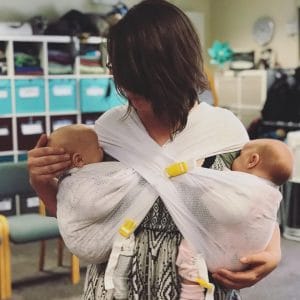
Pros
- Using two separate carriers means there is always the option of carrying one child at a time (or each if there is another caregiver).
- Two MiniSlings is a great hot weather option.
- Ring slings can give more adjustability than two MiniSlings.
Cons
- Two sets of rings can be hard work to adjust easily and be uncomfortable.
- The first baby can end up sliding under your armpit when putting the second baby in, but this does get easier with practice.
Two Buckle Carriers
There is a wide variety of buckle carriers that can be used when doing a front and back tandem carry when one baby fits well into the panel and is almost able to sit unaided. It always helps to explore all the different types of buckle carriers and see what would work for your family, as one type does not suit everyone. You may even choose to use different brands together.
Front tandem carries
There are a few buckle carries that can be used together for a tandem front carry, either off centre or hip carry. These are the Integra, the Ergo Embrace and the Izmi, as these have unpadded waistbands so there will be less of a large bulk around the caregivers middle. However, this can become very fiddly with all of the buckles and the straps across the shoulders. We would recommend booking an appointment with a consultant to make sure everyone is safe.
Front and Back tandem carries

Most brands of buckle carriers can be used for front and back tandem carrying, however it may be more comfortable to choose two with unpadded waist bands, for (example the Integra or the Izmi) as they will sit flat against the waist without too much bulk. Another option would be to use one unpadded and one padded waistband (for example a Tula or Lenny Lamb). This still keeps bulk to a minimum while increasing the feeling of support. There are so many variations you could use, so it is best to have a good look around and see what types of buckle carriers you think would suit you. Most sling libraries will stock a good range for you to try out.
Pros and Cons of two buckle carriers
Pros
- Two carriers offer a lot of adjustability.
- Each carrier can be used to carry children separately (sharing the load between caregivers, or if one child is in the buggy/walking!)
- Some carriers work well in combination.
Cons
- Two carriers can feel very fiddly with lots of buckles and straps.
- Carriers that have fixed position panels can be hard to move around the waist for two hip carries.

Mix and match options
Sometimes the best option is just to choose the things that work well for you on their own and see how it goes! The possibilities are endless when it comes to the mix and match approach, from a woven and a buckle together, to a Meh Dai on the back and a ring sling on the front.
Mix and match is often the easiest option when carrying children of different ages, making the most of the slings you already have. For example, a stretchy wrap or a close caboo is a fantastic option to use alongside another type of carrier when caring for a newborn baby and a toddler. The stretchy/Caboo should be put on first of all, and adjusted to fit the newborn snugly and safely. Baby is then taken out, leaving the stretchy/Caboo in place. This frees you up to then get your toddler safely onto your back in your chosen carrier (eg a woven or a buckle) without worrying about your baby during the process. As the stretchy/Caboo is “poppable” and has already been set up for your baby, once toddler is in place, baby can be quickly and easily popped back in (or out again, as needed, eg for a feed, or if your toddler has fallen asleep and baby needs a change or some play time).
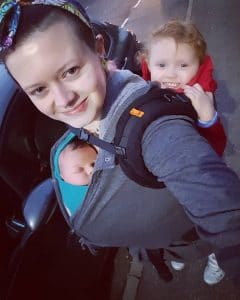

Pros and Cons of mix and match tandem babywearing
Pros
- There are many possibilities and a chance to be creative.
- This mix and match method can be very useful for using the slings you already have, rather than needing to buy more.
Cons
- It can feel like an overwhelming amount of choice; this is where sling libraries and consultants can offer guidance and get you off to a flying start.
Many families will opt for a sling and buggy combination with two or three children, but it is in fact possible to carry three children at once, as this hero mother demonstrates!
Summary
The most important thing to remember if you are considering using slings with your children, is to do what is best for your family. This will vary. It could be carrying children individually, one in a sling and one in a pushchair, or it could be tandem carrying. Every family is different, so what works for you might not be the best option for the next family, and what works for your friend might not be best for you.
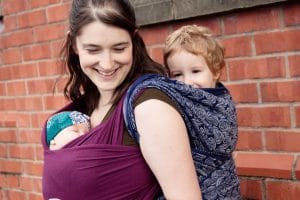
In conclusion, we recommend becoming familiar with carrying one baby first and then progress to tandem carrying in whichever way you feel most comfortable with. If you are unsure about anything, get support from a trained professional, they will be more than happy to give you all the information they can (we love to do it!) and do their utmost to make sure that you are utilizing all the resources that you can.
Authors Jess Yarborough and Rosie Knowles
Top FAQS
These are the most common questions about babywearing I am asked, in a single helpful list!
Just click on the links to read the relevant blog posts, some are kindly shared from others
Firstly; some of my most popular articles:
Do the babywearing “rules” really matter?
Babywearing and infant mental health
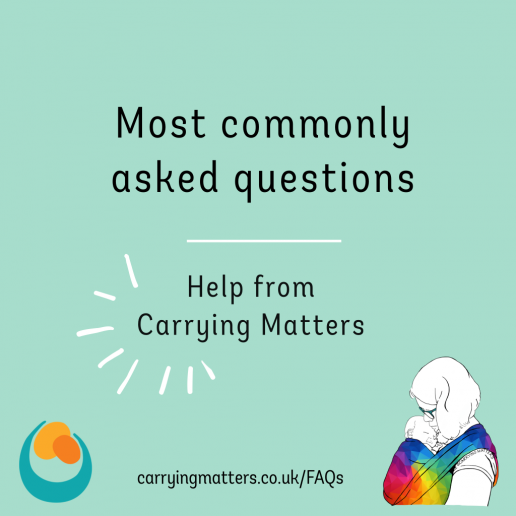
Secondly, I get this query daily. “Can I use your infographics to support families?” ABSOLUTELY! Everything on this website was created to help families with children to feel close and connected. Please credit me appropriately and link back to my website/social media (facebook, instagram)
Here is the link to the infographics (eg the Fourth Trimester/Build a Happy Brain/Why Carrying Matters/Skin to Skin posters, safe carrying images and much more)
Here is a search box to help you find what you’re looking for.
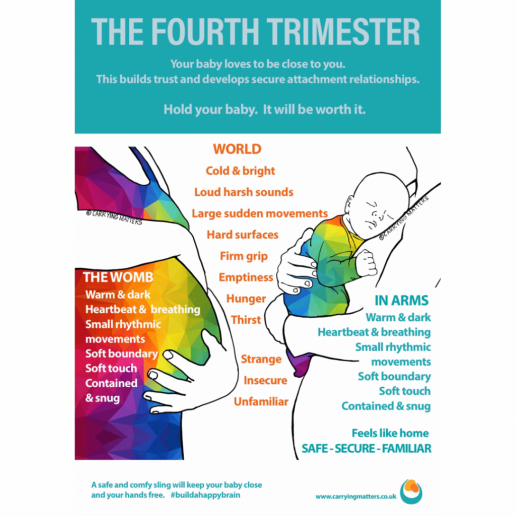
Getting started, and learning the basics
What kinds of sling are there and how do I use them? (links to the major types with useful guides, videos and troubleshooting)
How do I keep my baby safe in the sling?
Babywearing with a Newborn
What are the benefits of babywearing for my baby?
Are there any benefits for me too?
What are the best newborn sling options? (Coming soon)
How soon after birth can I carry my baby and what if I have had a Caesarean Section?
My baby’s head is so wobbly in the sling!
How high should my carrier be?
Can I carry my premature baby?
How do I protect my postnatal pelvic floor and babywear?
What about if I have a prolapse? (Thanks to Forest of Dean Slings)
Help! My child cries in the sling!
Does babywearing help my mental health?
Are slings useful if I have a perinatal mental health challenge?
Carrying in different circumstances
Can I sleep while my baby sleeps in their carrier?
How do I carry more than one child at a time?
How can I carry safely in hot weather?
How do I keep my baby warm while carrying in the cold? (ie can I put them in a snowsuit?)
How do I keep myself and baby dry when babywearing in the rain? (Coming soon)
Carrying adopted or foster children
What if my child has a disability? See this link for a stories from families living with a range of specific conditions.
Common safety queries
Will my sling hurt my baby’s hips?
What if I fall while babywearing? (Coming soon)
Sling Fitness/Dance and Babywearing
There are many fitness or dance classes focused on maternal wellbeing and bonding with baby while babywearing, which can be a great thing to participate in, like Barre and Baby, Dance Like a Mother, Joiemove and Sling Swing, to name just some.
We all know babies thrive when close to their mothers, and baby carriers can help with this rather than putting babies down all the time. Movement and activity are known to lift the mood, and friendly, welcoming social activity is an important part of helping new parents find a supportive community so they feel less alone. So keeping babies close during a fitness or dance class may seem to be a match made in heaven… or is it?
Some classes market themselves by suggesting that new mothers should be trying to “get their body back” shortly after birth, so they feel good about themselves. I dislike this phrase; after all, why would you want to encourage a butterfly to revert to a caterpillar? Motherhood and the changes that come with it are to be celebrated. Many women would like to work on the strength and health of their bodies, but this should be a positive choice, not one made out of shame or embarrassment.
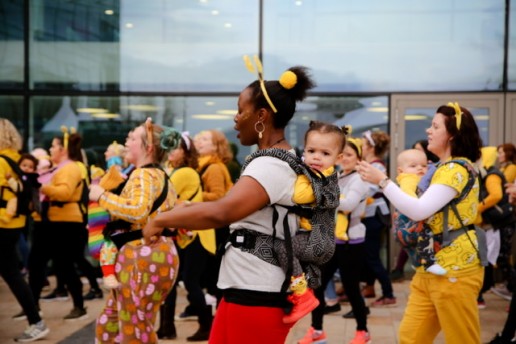
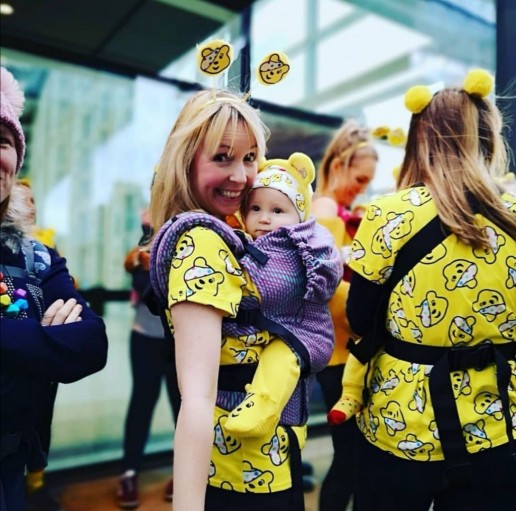
Baby safety at all times, and the health and wellbeing of new mothers are both of vital importance. It is my firmly held belief that anyone who is suggesting or recommending the use of a carrier during a class should be competent and confident in their use. This can only come with adequate training.
Furthermore, I believe that the long term health and fitness of women after birth and pregnancy takes precedence over quick-fixes. The pressure to “get your body back” and the media focus on celebrity bodies is not helpful for women. Good mental health and a supportive community are cornerstones of adapting successfully to life as a mother, and for many being active is part of that. However, there is often a significant lack of knowledge about the effects of many activities of daily life, let alone exercises or running etc on the pelvic floor, and loading it further with a baby carrier (especially one that is poorly fitting and uncomfortable) is detrimental in the early weeks to months.
It may take six months to a year for the body to recover completely, (according to research at Salford University). Of course this is very individual, depending on previous levels of health and fitness, how pregnancy and birth went, etc. Some women will be much more ready to return to their previous levels of activity than others. The “six week check” by the GP is often used as a benchmark to “sign off” as fit for exercise or dance classes. However, this is not what the six week check is for and this is not an appropriate way to establish if women are ready to return to increased levels of activity.
You can read more about my thoughts on slings and exercise here.
I believe that in order to be able to offer dance or exercise classes safely and beneficially, all instructors should be focused and committed to the health and wellbeing of both the mother and the baby as their top priority.
Instructors should all
- Have formal, high quality and officially recognised postnatal training qualifications (requiring assessment, and willing to provide these credentials to parents who ask.)
- Have a significant depth of knowledge on the pelvic floor after birth and the effects of certain movements and activity on this recovering organ. This is often lacking. I recommend the courses for fitness professionals run by Louise Field of Adore your Pelvic Floor.
- Offer proper assessment of a mother’s functional strength (beyond the “six week check”) and a willingness to adapt movements to reflect this.
- Demonstrate the ability and commitment to put the client and baby’s needs first, even if it means saying that the class isn’t suitable. Babies are not an accessory to be used for fitness.
plus
- High quality, in depth babywearing peer supporter training to ensure mothers and babies are carrying safely at all times, without any compromises. Instructors should have a particular interest in babywearing for its own sake, as opposed to something to add onto existing classes. Ideally they will already be familiar with slings. They should demonstrate a keen desire to be practising optimally and in line with current best practice. Baby and maternal safety is always paramount.
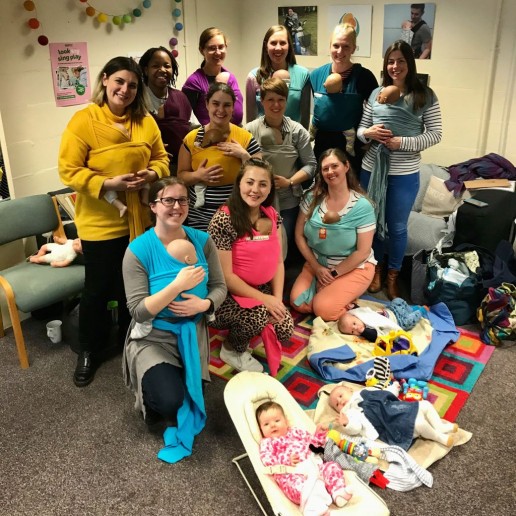
If you would like to explore the option of peer supporter training, please contact me to discuss. I reserve the right to decline training.
Please note that training with me is NOT an endorsement of any class, and Carrying Matters is NOT and never has been affiliated in any way with any fitness or dance classes.
I am no longer able to offer half day “safety awareness training” courses to those who are running postnatal fitness/dance classes. After a while running these courses, I feel this insufficient time to cover all the issues in enough depth to ensure the safety of babies and their mothers. This is especially as babywearing is not usually the main focus of the class and many class instructors have hardly any personal experience with babywearing themselves. Anyone who sees babywearing as an integral part of their class will be willing to invest in in-depth training with assessment.
Please note that I have attended a full day of training in pelvic floor awareness for fitness professionals myself.
Front carry with a Close Caboo photo tutorial
The Caboo is a great option for those who enjoy the snuggly feel of a stretchy wrap but prefer a little pre-structure. This front carry with a Close Caboo photo tutorial will get you off to a flying start.
Follow the steps to ensure a safe and snug carry; the time spent preparing really pays off when baby is put in, far less fiddling and adjustments!
Read more about carrying newborns in stretchy wraps or Close Carriers here.
Using a newborn insert with a buckle carrier tutorial
Some buckle carriers require an insert for use with newborns, as the panel is too tall and wide for a small baby. The insert raises baby up inside the panel to ensure they remain close enough to kiss with an unobstructed airway. It also creates a narrower seat for baby to rest on, while preserving the M shape and hip health.
Follow the steps to ensure a safe and snug carry; the time spent preparing really pays off when baby is put in, meaning it will feel more secure right away, and less fiddling and adjustments will be needed later.
Photo tutorial for raising baby up in a too-tall panel carrier to ensure free airflow
This tutorial shows raising baby up inside a panel carrier when the panel is too long, ensuring good airflow and free movement of the head.
This is important, as young babies have a large occiput (the round bone at the back of the skull) and if this is under pressure from behind, the head will tip forwards, pressing baby’s chin onto their chest and downwards into cleavage, which can present an airway risk. The fabric should never come higher than the bottom of baby’s earlobes, so they can move their heads freely. All the head support should come from the upper back part of the panel.
Babywearing Training
Do you love babywearing and want to know more about it, or be able to support others with their sling use? Then one of my courses could be just what you need!
- Do you want to understand more about why sling and carrier use is such an important tool for new families, and be able to be an effective advocate for their use?
- Do you want a good grounding in basic babywearing safety across a range of circumstances and an introduction to the major types of sling and how to use them well?
- Do you want to support families with their carriers?
- Are you thinking about setting up a sling library service or a specialist baby class (yoga, forest school etc)
- Do you want become a consultant, able to work with more complex situations?
- Are you a NHS worker planning to use carriers for babies or children in specific settings (eg neonatal physiotherapist or occupational therapist?)
- Are you a health or social care professional (eg a council worker, health visitor, infant feeding worker) wanting to know more about safe sling use and how to advise parents and signpost appropriately?
I offer babywearing safety courses as well as in depth peer supporter and consultant training, please see below for my courses. Bespoke courses can be created on request.
I also work with other trainers in different parts of the country, who can offer peer supporter courses. Please see here for more information.
If you would like to become a trainer yourself, please contact me directly.
Babywearing theory and sling/carrier safety – online course, £49
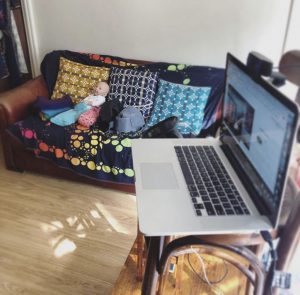
This is open to everyone, and can be completed at your leisure. There are short tests of your knowledge as you proceed through the course and a final assessment to complete the course for a certificate of online learning.
- This will suit many people who wish to enhance their knowledge and understanding, become evidence-based babywearing advocates, be able to signpost to local libraries with more confidence, and are not planning to offer in-person support to families on a regular basis.
- This course is not timed, and can be done at your own schedule and to your own pace.
- Please be aware that this course is not a Peer Supporter or Consultancy course and the certificate cannot be presented as such.
- This course is not sufficient on its own for anyone planning to offer any form of movement classes with babies in slings.
Structure of the course
- Why Carrying Matters – the science.
- Introduction to Basic Babywearing Safety.
- The Different Types of Slings And How To Use Them.
- Assessment Module (to confirm learning)
Sling and Carrier safety and signposting course for organisations working with parents – hybrid online and practical course, TBC

This course is particularly suitable for organisations who work with antenatal and postnatal families, wishing to be able to offer basic safety advice and are not planning to offer in-person one to one support to families with their own slings.
- Please be aware that this course is not a Peer Supporter or Consultancy course and the certificate cannot be presented as such.
- This course is not sufficient on its own for anyone planning to offer any form of movement classes with babies in slings.
Structure of the hybrid course
- Online – Why Carrying Matters – the science about why using slings is so beneficial for families
- Online – Basic Babywearing Safety
- Online – The Different Types of Slings
- Online – Assessment Module (to confirm learning)
- Half day in person training with a Carrying Matters trainer to consolidate learning
- Assessment MCQ to assess competence, if passed, will be issued with a certificate of learning.
 Peer Supporter Course, £129 per person, half a day online learning, half a day practical learning (in person or online)
Peer Supporter Course, £129 per person, half a day online learning, half a day practical learning (in person or online)
The Peer Supporter course is a combination of online learning and a practical training session, either online via Zoom, or in person.
The online learning covers the theory of babywearing, basic safety, an overview of the main types of carriers and how to use them, the role of the peer supporter, and a little about special circumstances. It is more in depth than the simple theory/safety course.
The practical session focuses on actively supporting new parents with hands-on-help, providing them with support with fitting and troubleshooting. Babes in arms are welcome as we recognise that babies need their parents! We would encourage you to consider the impact that older, more mobile children and toddlers can have on your and others’ learning.
More information about the course and the equipment can be found here.
Satisfactory completion of this course and the assessment will generate a certificate of competence as a Babywearing Peer Supporter.
Structure of the Peer Supporter Practical session
- Building and assessing skills in using the main types of carrier.
- Learning and practising how to support others and troubleshoot effectively.
- Opportunities for discussion with Rosie and fellow students.
- Assessment Module to ensure receipt of information and ensure the high standards of training are met.
If you have done the online theory/safety course in the past and wish to upgrade to Peer Supporter training, please contact Rosie.
Reduced cost places are available for certain priority groups, read more about that here and how to apply.
 Peer Supporter Course for HCPs, £129 per person, half a day online learning, half a day practical learning (in person or online)
Peer Supporter Course for HCPs, £129 per person, half a day online learning, half a day practical learning (in person or online)
The Peer Supporter course is a combination of online learning and a practical training session, usually online via Zoom or MS Teams for health care professionals around the UK.
The online learning covers the theory of babywearing, basic safety, an overview of the main types of carriers and how to use them, the role of the peer supporter, and a little about special circumstances. It has a greater focus on newborns or children with extra needs in health care settings.
The practical session focuses on actively supporting new parents with hands-on-help, providing them with support with fitting and troubleshooting. and can be tailored to work with particular carriers.
Bespoke courses for groups are available.
- Satisfactory completion of this course and the assessment will generate a certificate of competence as a Babywearing Peer Supporter.
Babywearing Consultancy course – new format for 2024
I love offering consultancy courses, equipping people with the skills they need to support parents and carers with their children – the impact of such people can be life changing for families. As Kiri and I worked with our 2022-2023 cohorts, two things became clear – firstly that people really value the face-to-face element of training, especially with the more complex situations we are more likely to encounter as consultants, and secondly, that there is a huge amount of knowledge being imparted in a very short space of time, which can be challenging to absorb and then put into practice independently.
With that in mind, we have changed our format to be a longer course that allows people the time they need to learn as they go, and apply their new knowledge, develop questions and build relationships while still part of the course, and kept the face-to-face aspect in a single weekend of in-person training.
The course has three sections.
- A comprehensive online theory section. This covers all aspects of babywearing safety and the basics of carrier use, the history of babywearing, the science behind close contact, how to develop consulting skills, and much more. This is in a modular format that can be done at your own pace before the practical sessions, and will take around 12 hours of learning time.
- A series of 5 live 2-3hr Zoom sessions where we begin learning and practising how to use the major carrier types in depth, how to adapt them to individual needs, as well as working on communication and exploring common scenarios. Each week has a different theme and you will be encouraged to put your skills to use before the next session, to allow for real-time practice and personalised feedback.
- A weekend of in-person learning with me and Kiri in Sheffield, where we work on complex situations, disabilities, and the ‘soft skills’ that are so key to effective consultations and satisfying encounters (as well as what to do when things are not working as you had hoped!). This is the culmination of the course where we bring everything together.
All our trainees become part of their own cohort for discussions and feedback, as well as joining the Carrying Matters educator groups (and the UK professional groups) for ongoing support.
Dates for spring/summer 2024 are currently fully booked, Autumn/Winter courses dates will be available soon, please contact me if you want to know more or arrange a group course.
The course costs £600, and payment plans are available. Please do get in touch if you have any queries. Further reading here.
Why train with me?
I am a Carrying Advocacy educator and trainer, and am well known for the evidence base and scientific focus of my training, as well as my ability to demonstrate clearly and simply, and explain concepts simply and engagingly. My interest is in supporting new families with babywearing, due to the enormous value this skill can add to their wellbeing and their long term health and my goal is to see this become available to every antenatal and postnatal family, via educated advocates!
I have trained hundreds of people and educated many more over the last ten years. These range from interested parents who want to volunteer or help their own friends, massage therapists, early years providers, health care professionals (health visitors, midwives, doulas etc) and those who want to set up their own local sling libraries and become consultants.
Feedback
I’d highly recommend any enthusiast to attend this course. I found it thoroughly enjoyable and look forward to being able to use this new knowledge to help more parents discover the benefits of babywearing, as I have.
R.T.
“Your course is incredible! Far, far more than a course about babywearing. There is neurology, cognitive development, sociology, psychology and attachment theory (so far), all woven together with the theme of carrying and the early environment. I am absolutely loving working my way through. These are all the themes I am so interested in.”
C.S.
“I thoroughly enjoyed Rosie’s online theory course on babywearing. It was easy to use and navigate online. As well as the written word, there were informative videos and links to other articles to read covering many varieties of slings and carriers, how to wear them and troubleshooting. The course started by talking through why carrying matters and the science behind it, all so important to know and understand when helping new parents. An introduction to babywearing safety and the role of the peer supporter are also included and have the perfect level of detail. Overall I found the course very informative and easy to break down into manageable sections to work through at my own time. I feel fully informed and now understand why carrying matters, the different options available and the importance of safety when carrying. I feel much better informed to be able to support parents with their carrying journey.”
C.C
Rosie was fab – really brilliant. I remain in awe of her skill in teaching and working with new mums sensitively yet safely.
E.S.
“The detail in the course was very helpful and interesting- I think the evidence-base and history of baby wearing is so important, particularly as a health professional so we can inform parents fully about why it is a good practice that we should encourage and why society can cause us to have conflicting perceptions.”
R.C.
Rosie you are an inspirational teacher, it was a pleasure to have met you and learned from your wealth of experience!
K.M.
What a wonderful course! Packed full of information and learning. Rosie knows a staggering amount and is so enthusiastic and inspiring.
J.T.
It was a fantastic course! I learnt so much and came away feeling really confident. I am so looking forward to putting my new knowledge and skills in to action.
R.E.
Thank you for such a truly amazing course I came away a much more confident person and I learnt a lot from the course. I have been raving about it since.
Z.S.
I really enjoyed it. I have learnt a lot. I liked the way it was structured and the friendly manner things were taught in. I felt supported throughout and never felt stupid about lack of knowledge which was great.
It made me eager to learn much more.
A.E.
I’d highly recommend any enthusiast to attend this course. I found it thoroughly enjoyable and look forward to being able to use this new knowledge to help more parents discover the benefits of babywearing, as I have.
“Your course is incredible! Far, far more than a course about babywearing. There is neurology, cognitive development, sociology, psychology and attachment theory (so far), all woven together with the theme of carrying and the early environment. I am absolutely loving working my way through. These are all the themes I am so interested in.”
“I thoroughly enjoyed Rosie’s online theory course on babywearing. It was easy to use and navigate online. As well as the written word, there were informative videos and links to other articles to read covering many varieties of slings and carriers, how to wear them and troubleshooting. The course started by talking through why carrying matters and the science behind it, all so important to know and understand when helping new parents. An introduction to babywearing safety and the role of the peer supporter are also included and have the perfect level of detail. Overall I found the course very informative and easy to break down into manageable sections to work through at my own time. I feel fully informed and now understand why carrying matters, the different options available and the importance of safety when carrying. I feel much better informed to be able to support parents with their carrying journey.”
Rosie was fab – really brilliant. I remain in awe of her skill in teaching and working with new mums sensitively yet safely.
“The detail in the course was very helpful and interesting- I think the evidence-base and history of baby wearing is so important, particularly as a health professional so we can inform parents fully about why it is a good practice that we should encourage and why society can cause us to have conflicting perceptions.”
Rosie you are an inspirational teacher, it was a pleasure to have met you and learned from your wealth of experience!
What a wonderful course! Packed full of information and learning. Rosie knows a staggering amount and is so enthusiastic and inspiring.
It was a fantastic course! I learnt so much and came away feeling really confident. I am so looking forward to putting my new knowledge and skills in to action.
Thank you for such a truly amazing course I came away a much more confident person and I learnt a lot from the course. I have been raving about it since.
I really enjoyed it. I have learnt a lot. I liked the way it was structured and the friendly manner things were taught in. I felt supported throughout and never felt stupid about lack of knowledge which was great. It made me eager to learn much more.
FAQ
Can I just do the online theory and safety course?
Yes, this will generate a certificate of competence in babywearing theory and safety, which may be all you need. You will have a good grounding in why babywearing is so useful, based in evidence, a solid understanding of how to keep a baby safe in the major types of sling and be able to advocate and signpost to further resources. This is not a peer supporter or consultancy course.
I want to support new parents to choose a good sling, and become confident in putting their slings on, or set up a sling library. What courses do I need?
You will need the Peer Supporter Course.
I want to offer classes for new parents and their babies with slings as part of the class. Is the online theory course enough?
No. You must do the Peer Supporter training. The online theory course will not be enough on its own, as hands-on skills and careful planning of classes are needed. Adding any movement with a sling beyond walking increases the potential for harm. Babies and their caregivers’ wellbeing should be the primary concern for such classes, and they should not be placed at risk by inadequate training.
Can I have a practical session tailored to the specific need of my group (eg neonatal nurses, health visitors or for dance classes, etc?)
Absolutely, you can do the online theory and safety course and then have your own group practical session with me, please get in touch to discuss your needs. Please be aware that I am a working GP and can only offer a certain number of practical sessions per year.
Do I need insurance?
Those who attend this course, complete the post-course assessment and receive their certificate of completion are eligible for insurance from several providers, such as BGC, Therapist, and more.
Dance and exercise classes with slings
Please read this first if you are considering setting up one of these classes. The safety of child and parent is paramount at all times and there is simply too much to cover when the class instructor is not already very familiar with slings and aware of the risks involved (this is more than just being aware of the “TICKS” guidelines). If you want to discuss whether you are suitable for entry on this course please email me before you book. I reserve the right to refuse training.
“I really enjoyed trying different carriers. I found the trouble shooting sections particularly interesting and fun. I learnt a lot and feel more confident with all carriers and especially with how to wrap a new born.
I really loved it and now want to do the consultant training even more. Rosie was clearly very enthusiastic and dedicated and made everything so interesting. She was pretty inspiring.”
“Everything I had hoped for was met, I feel like a peer supporter now, not just someone who loves slings!”
“Rosie was born to teach people. Simply fantastic in the way information was relayed. Would highly recommend.”
“The whole day was so good! A key element was the ability to see and try so many different types of slings and to have time to go through basic principles regarding how to use them all. The role play aspects where we were able to troubleshoot carrier problems was also very useful.”
“Hi Rosie, I couldn’t go to bed without sending you a note to say a huge thank you for the course today. I’ve never felt more included and welcome and I’m so thrilled I came along. Thank you for your hospitality and brilliant teaching, I’m raving about babywearing to my husband and cannot wait to volunteer at a meet soon.”
“I loved the content of the day, the discussions, playing with different slings, learning new ways of slinging, wrapping etc. The course was well run, well organised and I felt empowered to speak, share and question.”
“I feel much more confident in my knowledge of both the benefits of babywearing, and how to go about enabling parents.”
“I really enjoyed meeting other like minded people. I liked the theory of babywearing as it related closely to the work I do as Breastfeeding Lead in the NHS. I enjoyed trying all the different slings and carriers and understanding in what situations they would be used.”
“My personal learning aims were met, it exceeded my expectations. I found the course was extremely enjoyable and covered so much subject matter but was not overwhelming. My aims were well and truly met. I now believe I could give a new babywearer good/correct advice and help in ways I was unsure about prior to the course.”
“Having someone with your experience and knowledge available all day to ask questions and watch demo was incredible. I really enjoyed the contextual and historical information about Babywearing and what led us all into that room that day. It put everything into the ‘bigger picture’ and made me feel such a part of the huge Babywearing community. Having such a massive amount of slings in the room to try and compare was utterly invaluable – such a rare opportunity. I thought the balance between practical and theory was absolutely spot on. As someone who’s very interested in the sociopolitical aspects of Babywearing I was really pleased to see this covered in the course and really appreciated that you placed Babywearing so firmly in this context during the day.”
“The course really opened my eyes to consider the needs of individuals and how essential it is to be inclusive and approachable and gave me the tools to do this confidently (especially regarding narrow base carriers). It was useful to be shown how to exaggerate movements and words when teaching and to have the opportunity to practice this. Rosie’s enthusiasm was infectious and made the whole day very engaging. The size of the group worked well and I especially enjoyed how well we all got on.”
Educational Resources
This page contains various resources that may be useful for education and supporting others. Leaflets, posters and postcard packs can be purchased. Images and PDFs can be downloaded free of charge by clicking on the photos. Please ensure you credit me (Dr Rosie Knowles) if you use them.
Safety Resources
- The 4 Key areas webpage can be found here – this has links to translations into other languages.
- The Carrier Height webpage is here – the image can be found lower down on the page.
Click on the image to download a PDF, or order a pack of high quality printed leaflets using the button below.
Click on the image to download a PDF, or order a pack of high quality printed leaflets using the button below.
Click on the image to download a PDF, or order a pack of glossy postcards or posters using the button below.
Click on the image to download a PDF, or order a pack of glossy postcards or posters using the button below.
Click on the image to download a PDF, or order a pack of glossy postcards or posters using the button below.
Click on the image to download a PDF, or order a pack of glossy postcards or posters using the button below.
Click on the image below to download a PDF, or order A3 posters using the button below.
Click on the image to download a PDF, or order A3 posters using the button below.
Click on the image to download a PDF, or order A3 posters using the button below.
Click on the image to download a PDF, or order A3 posters using the button below.
Click on the image to download a PDF, or order a pack of posters using the button below.
Click on the image to download a PDF, or order a pack of posters using the button below.
Read Rosie’s well loved Why Babywearing Matters book here, published by Pinter and Martin.
Read Rosie’s well loved Why Babywearing Matters book here, translated into Polish by Lenny Lamb.

